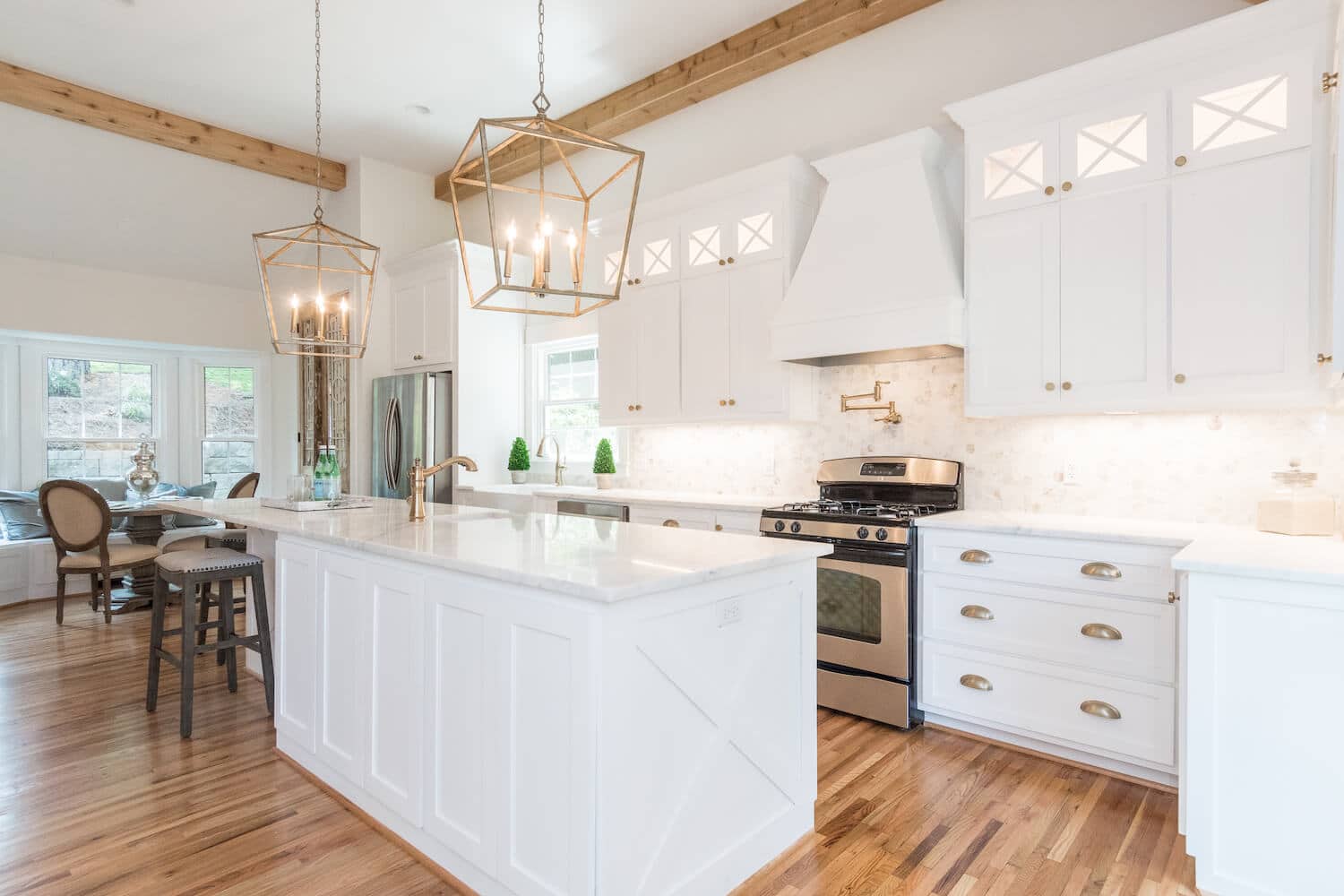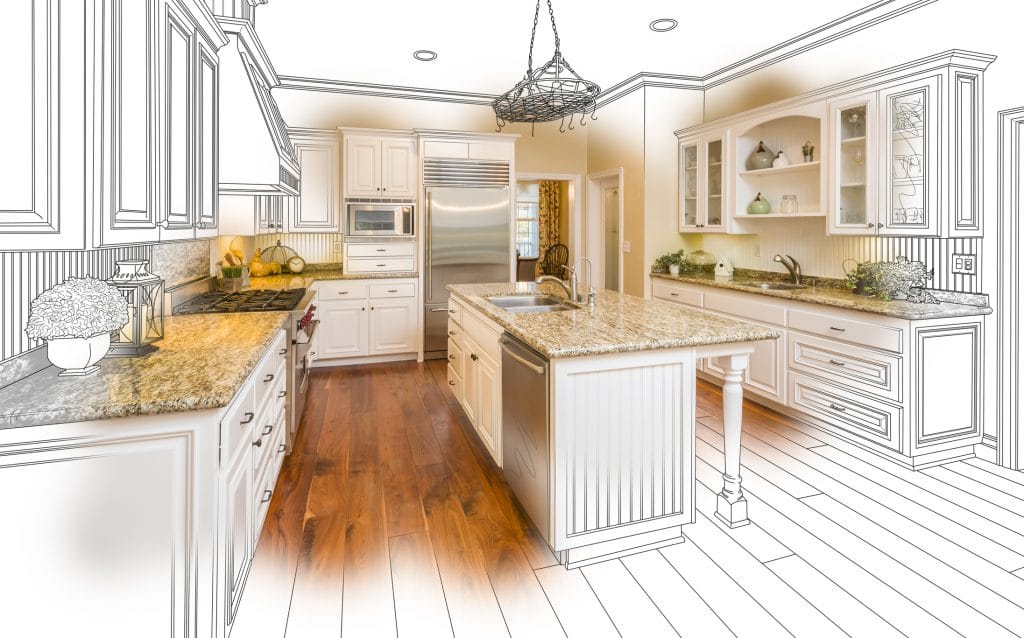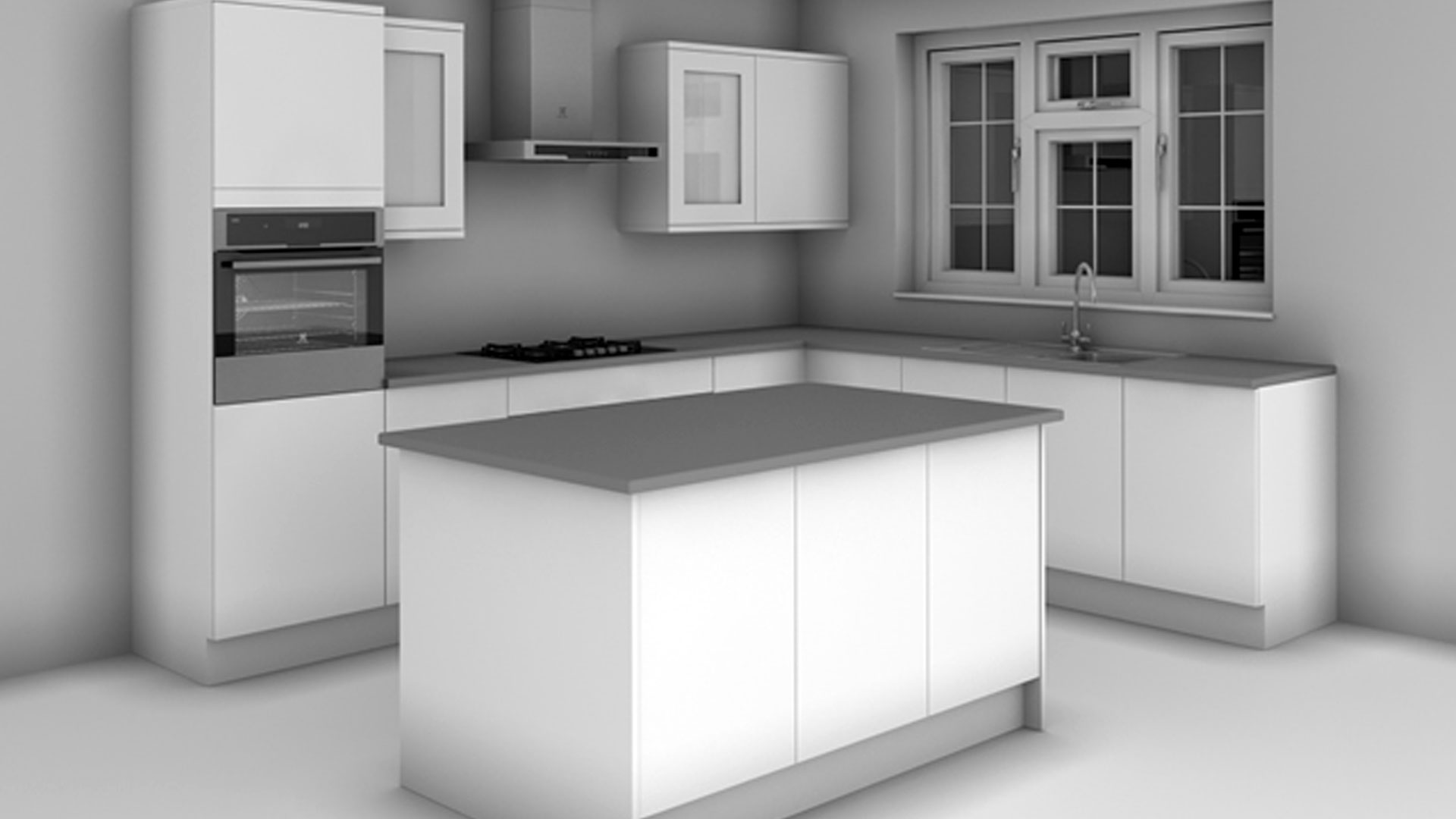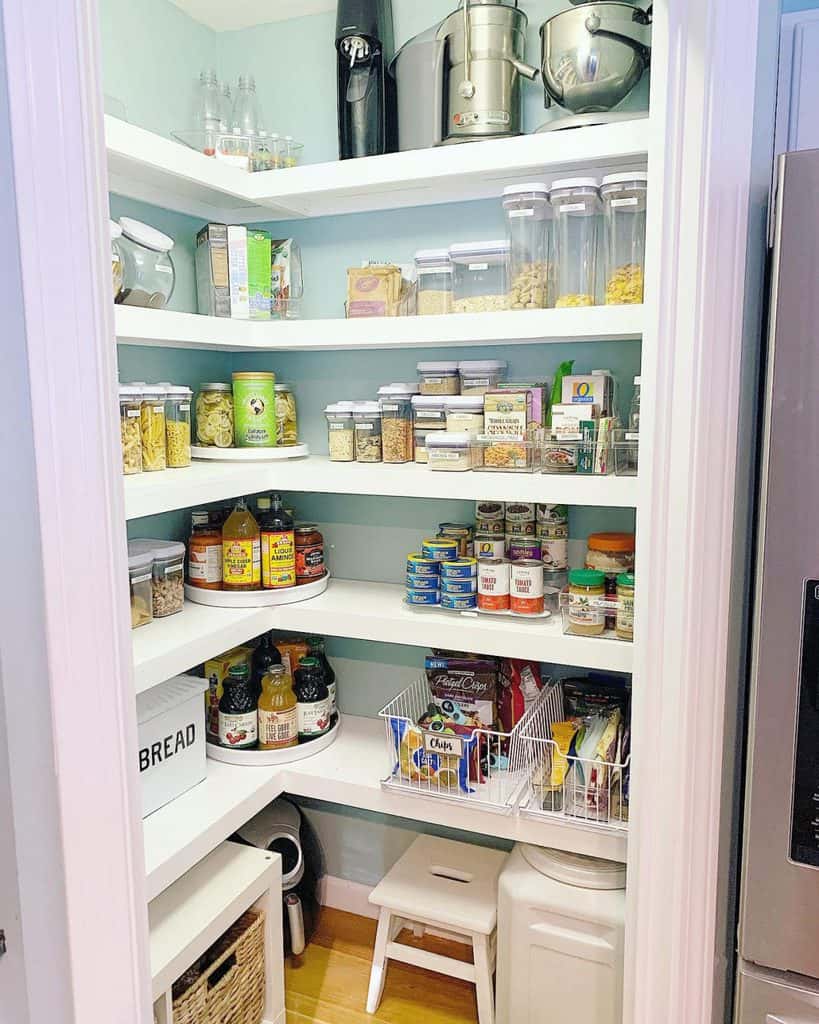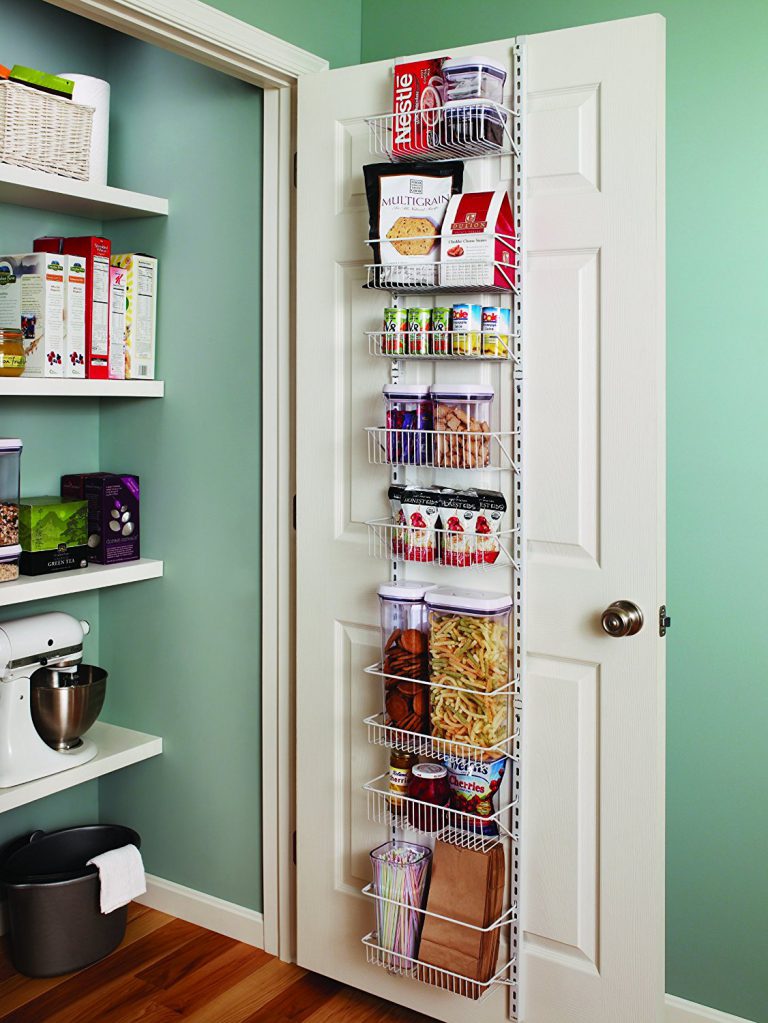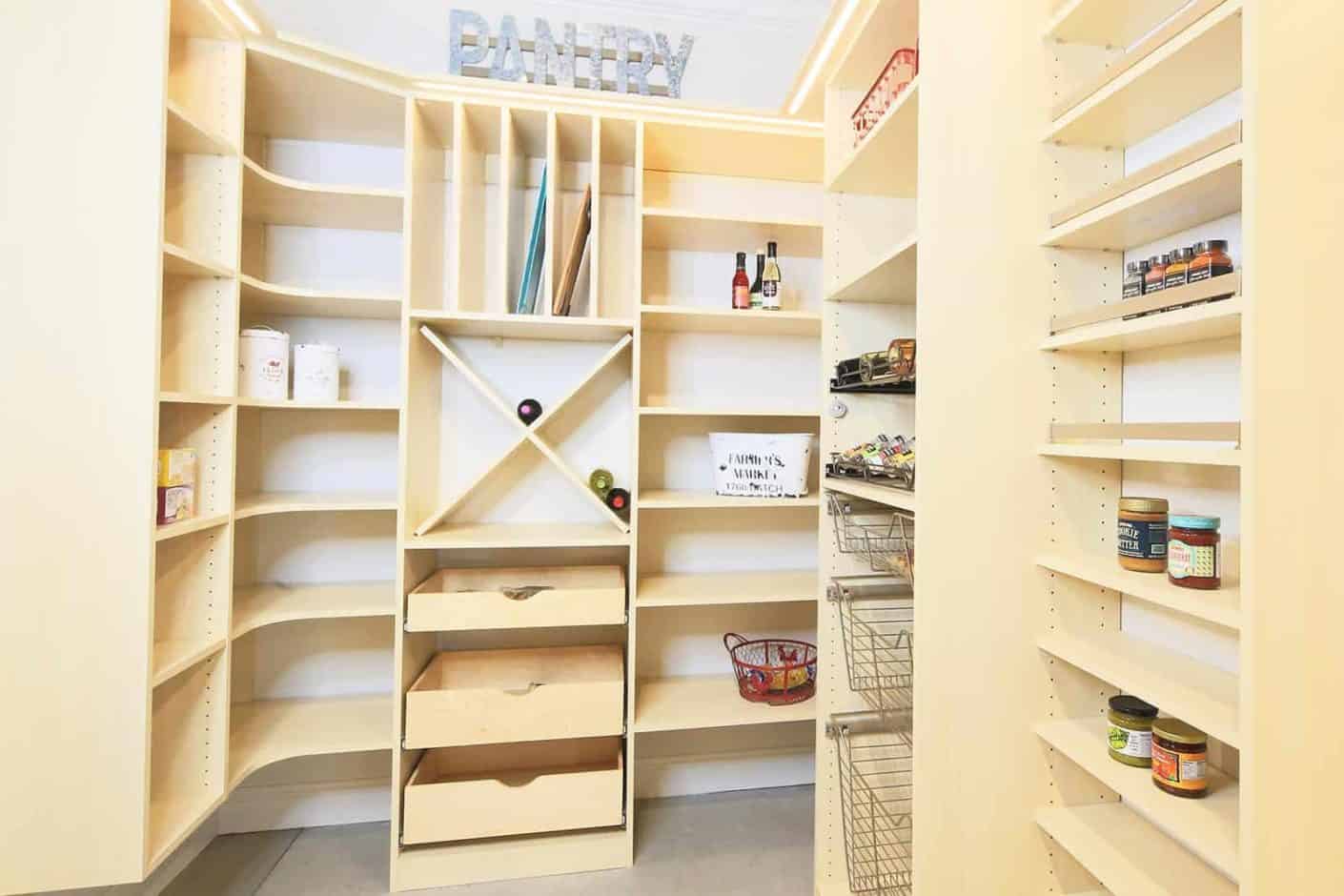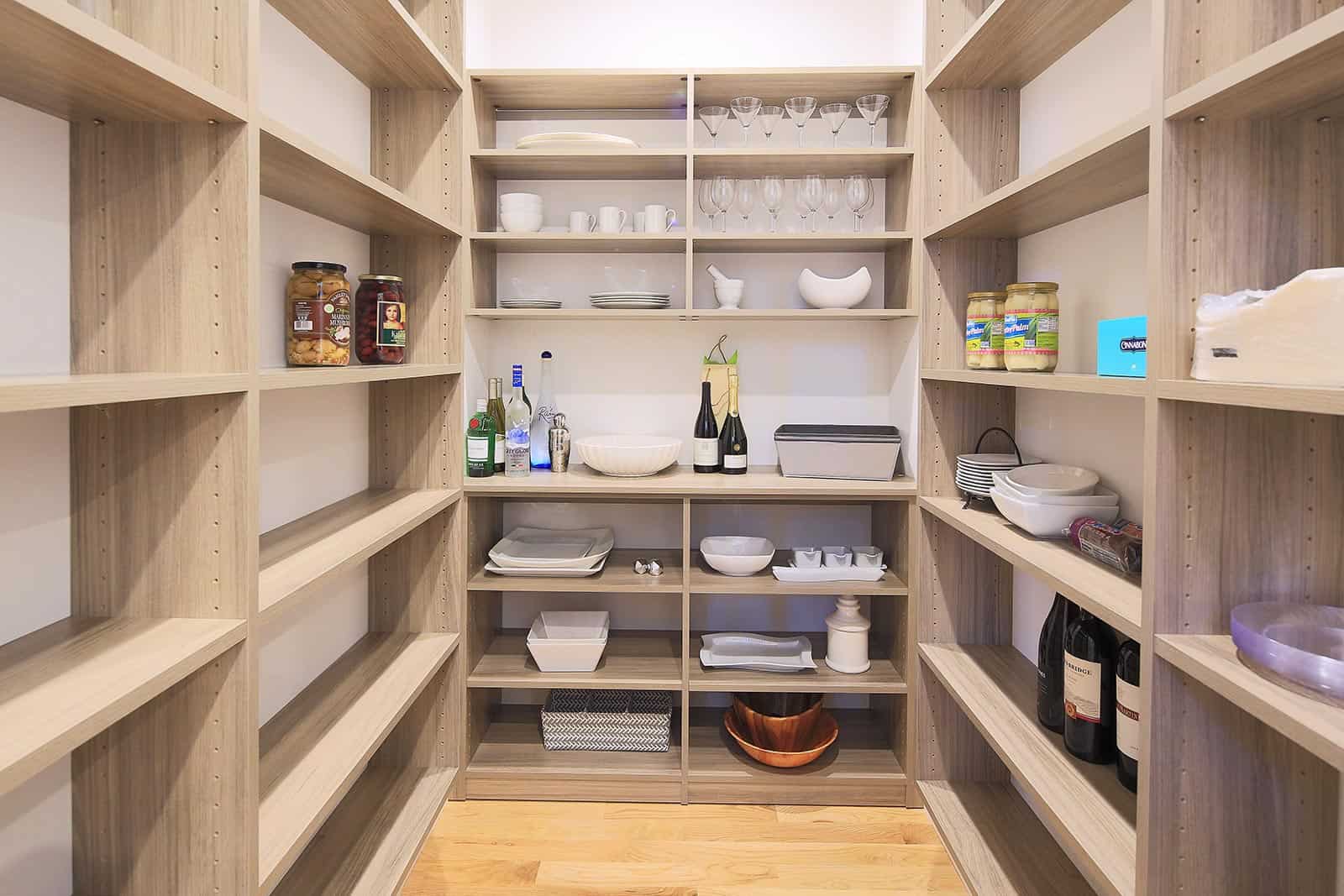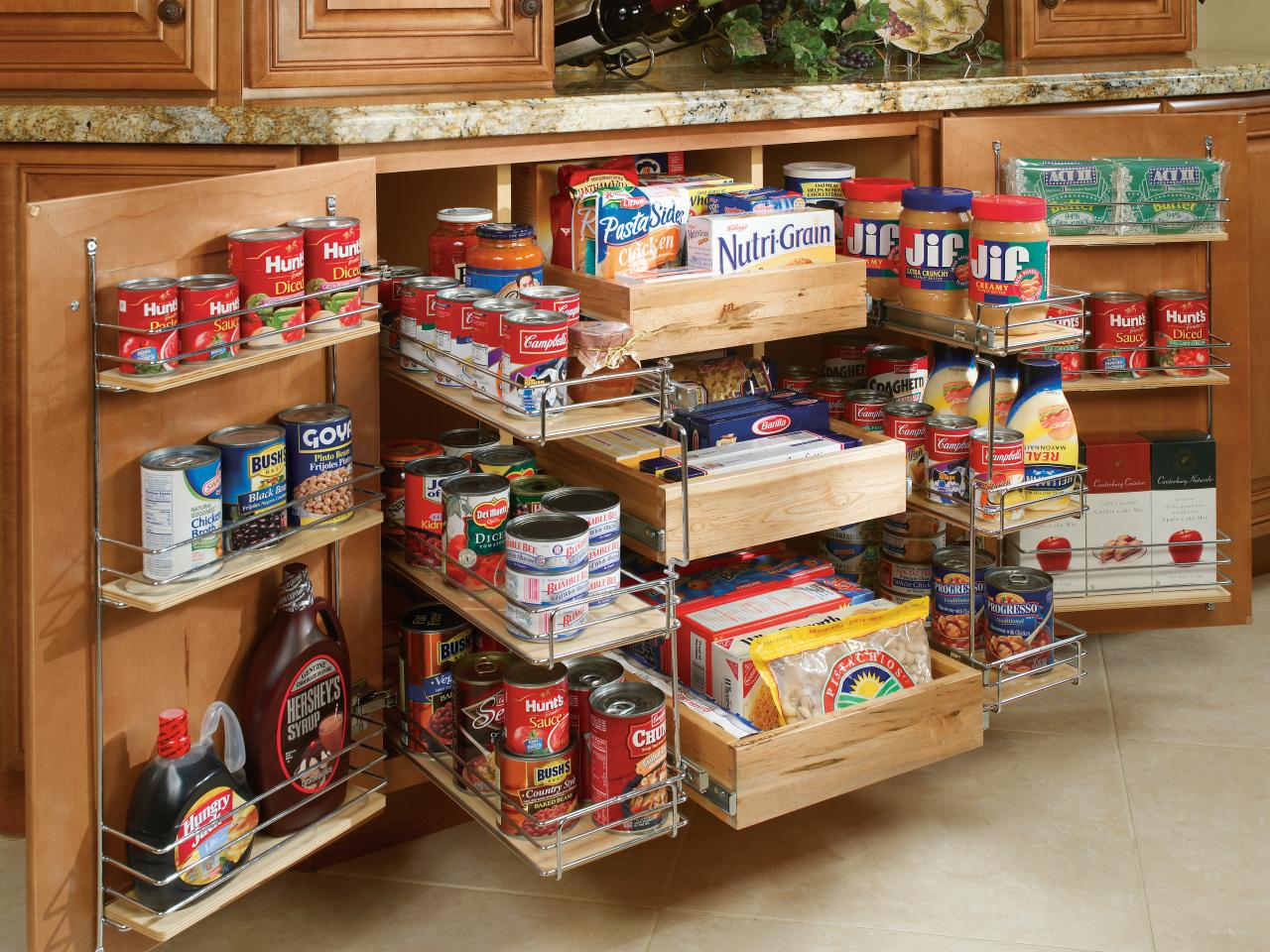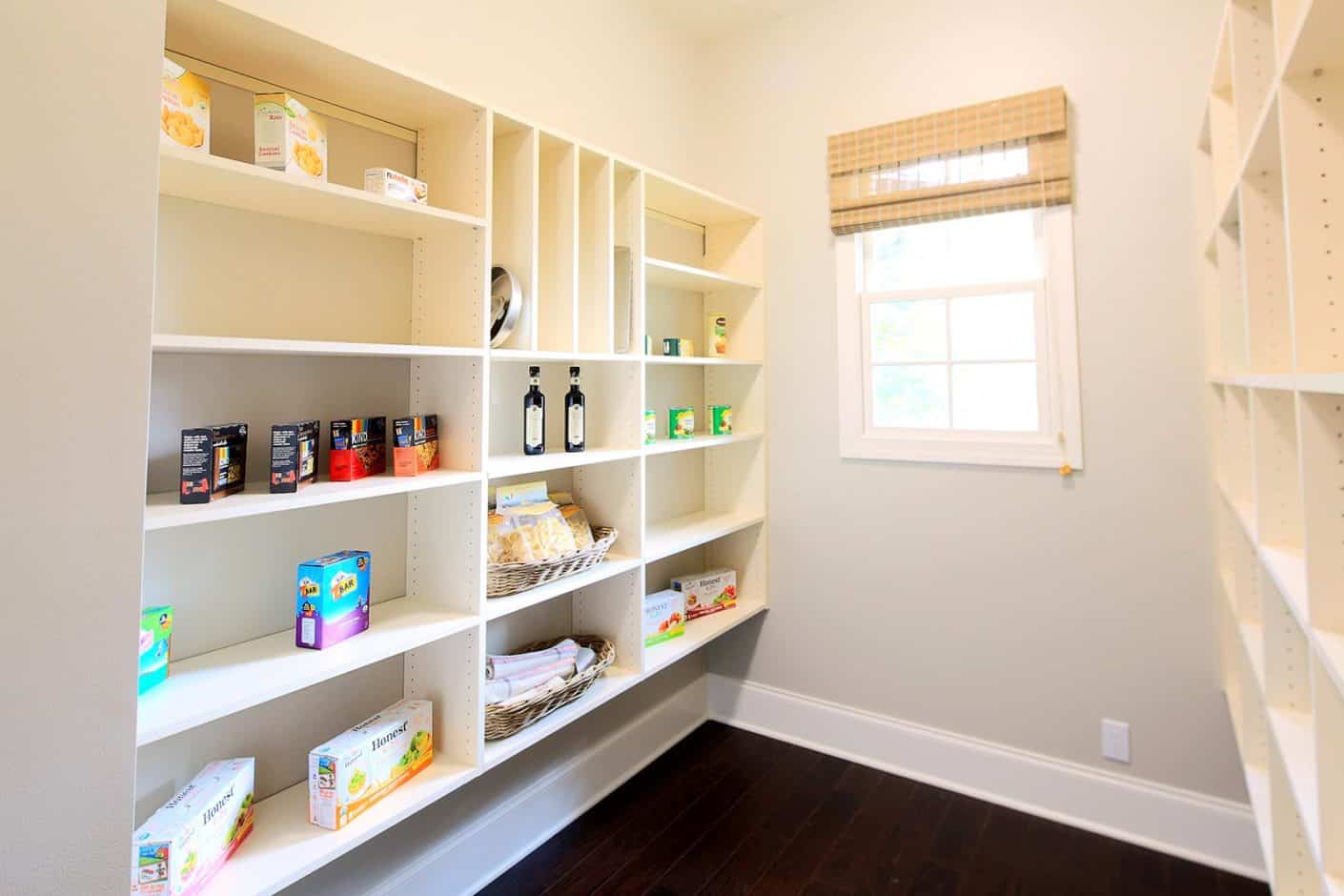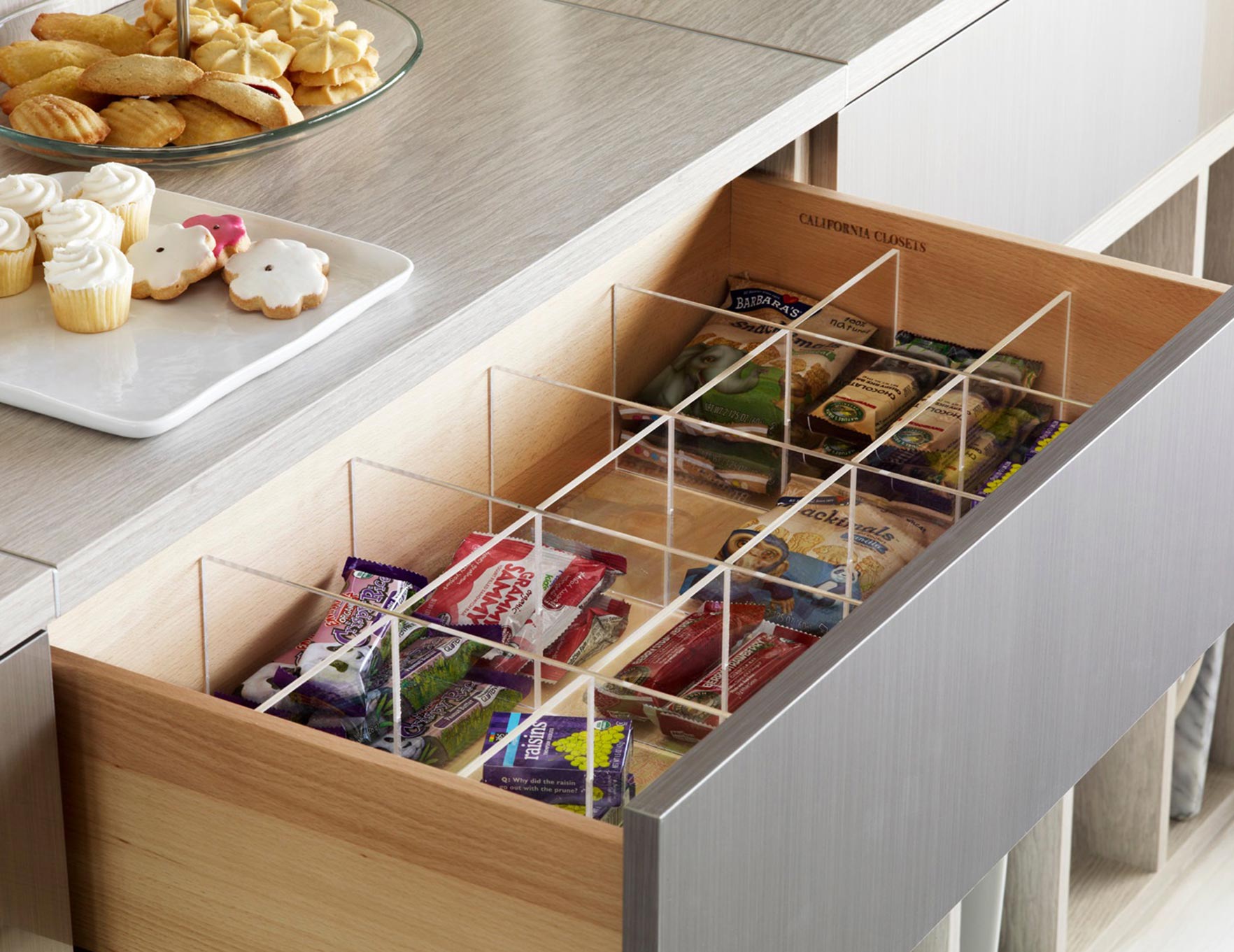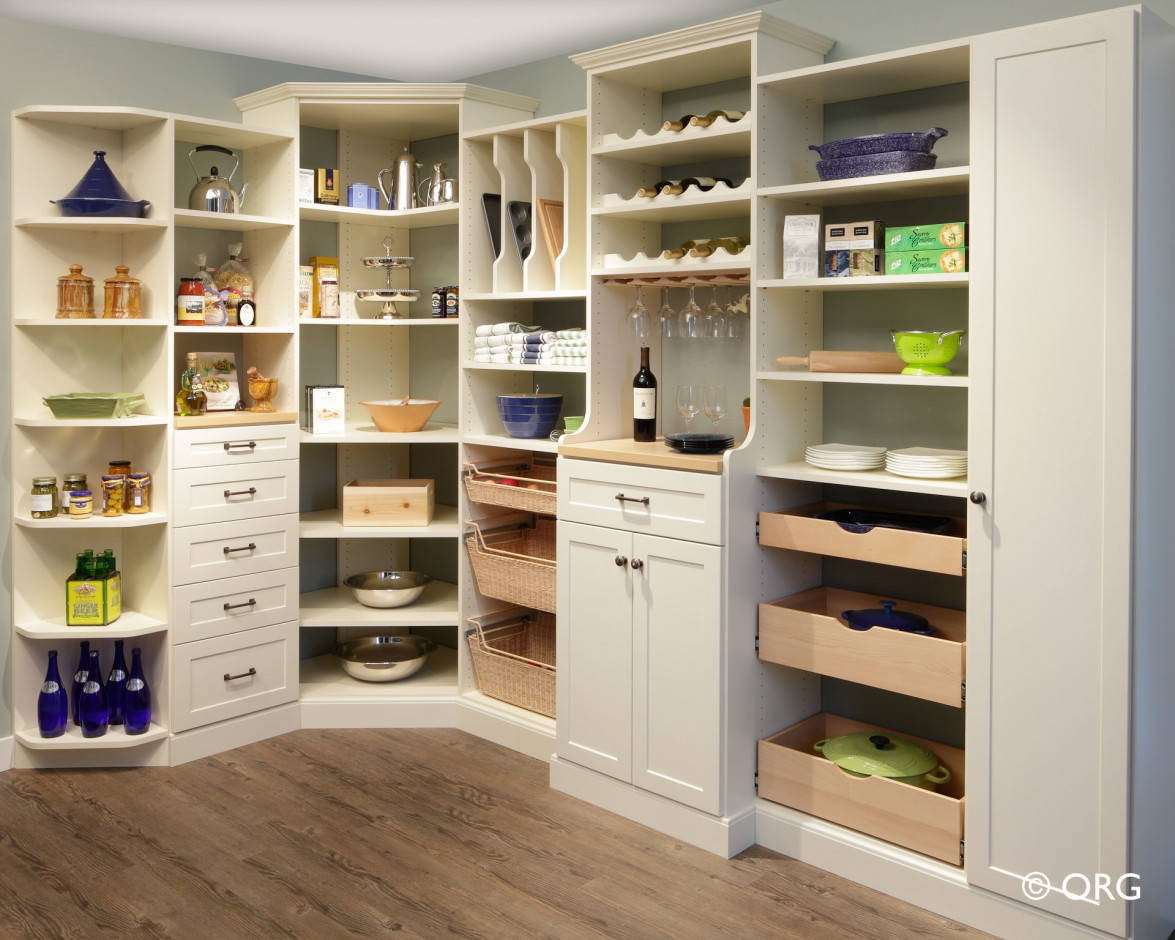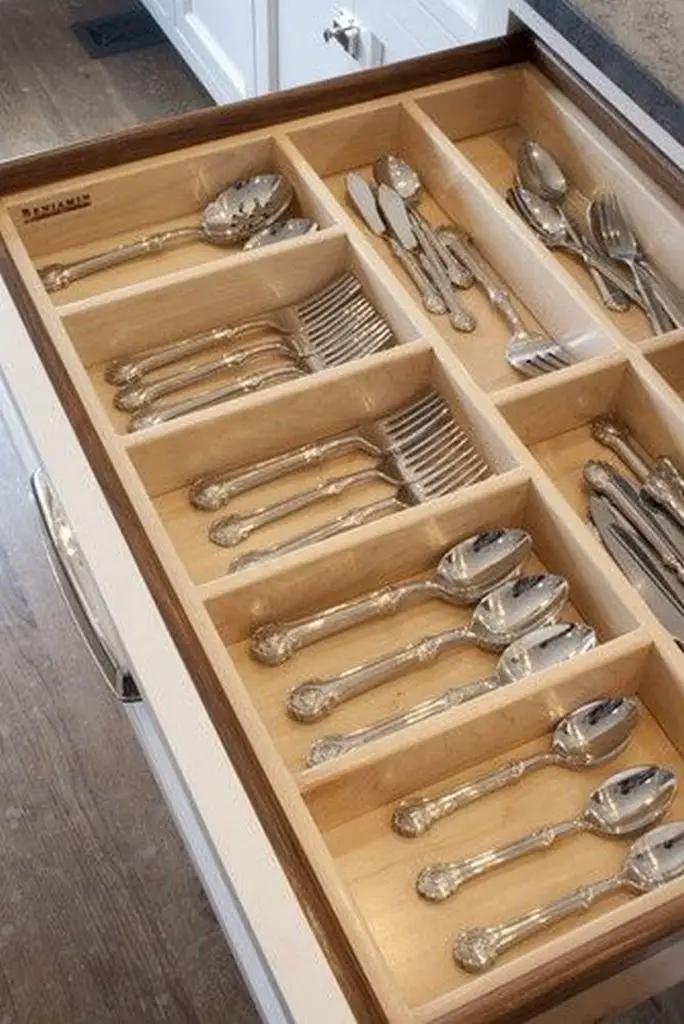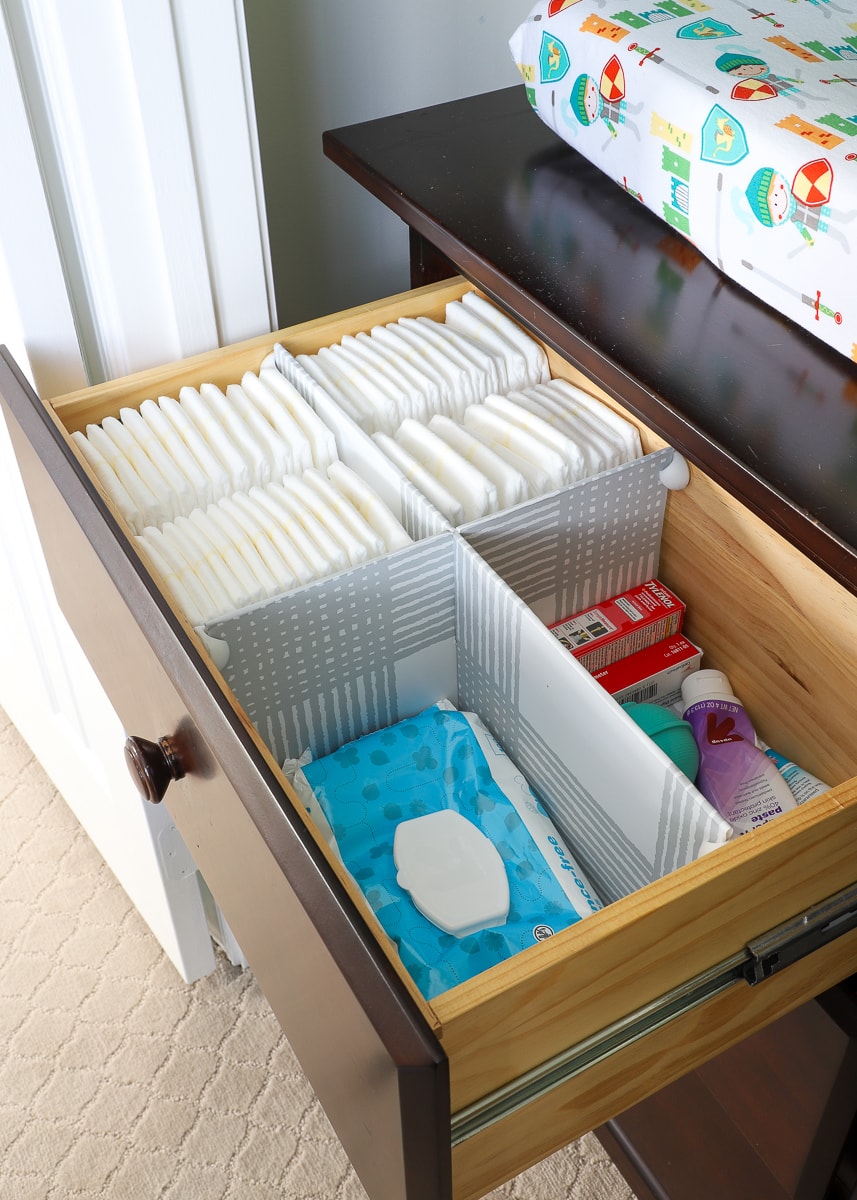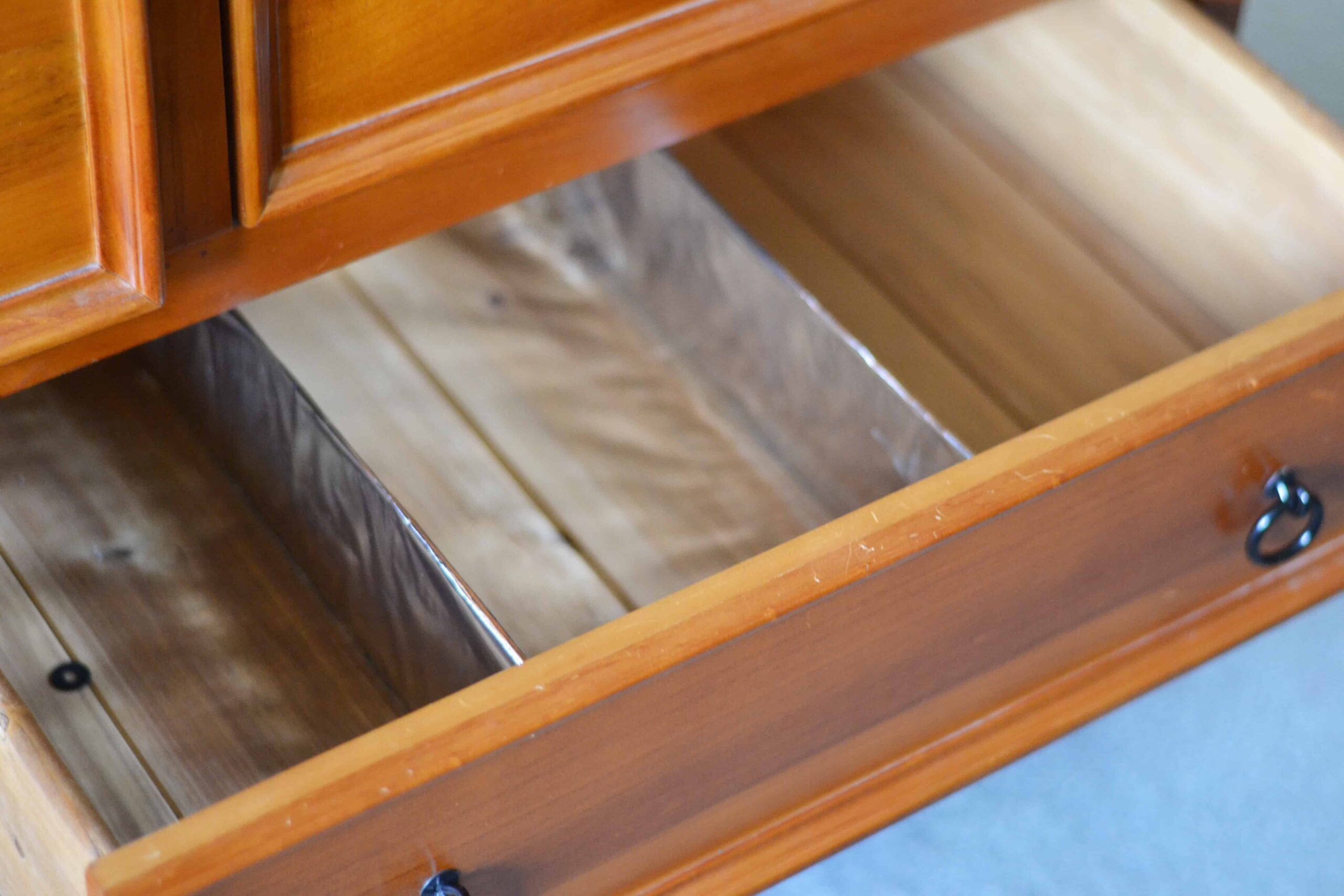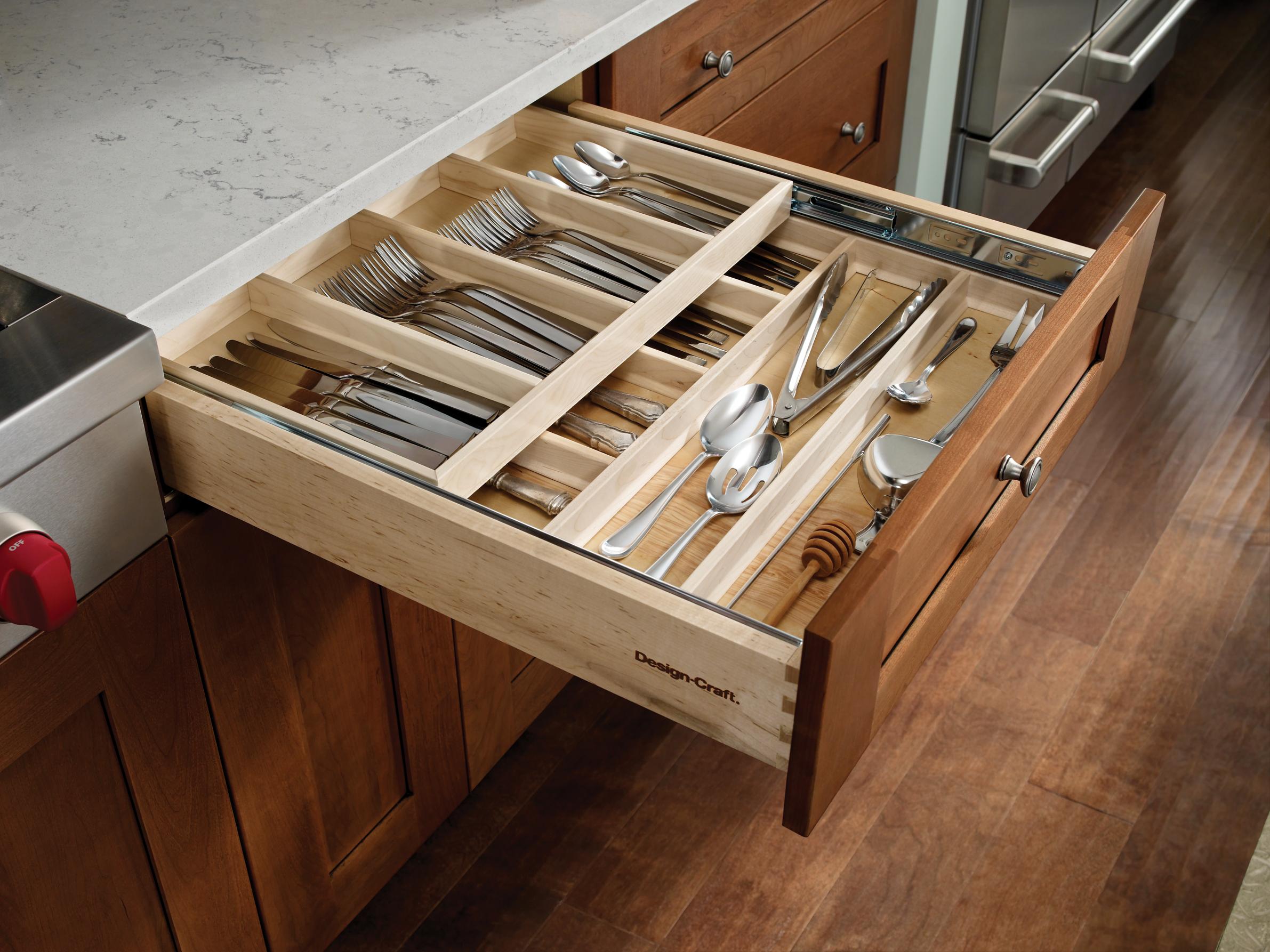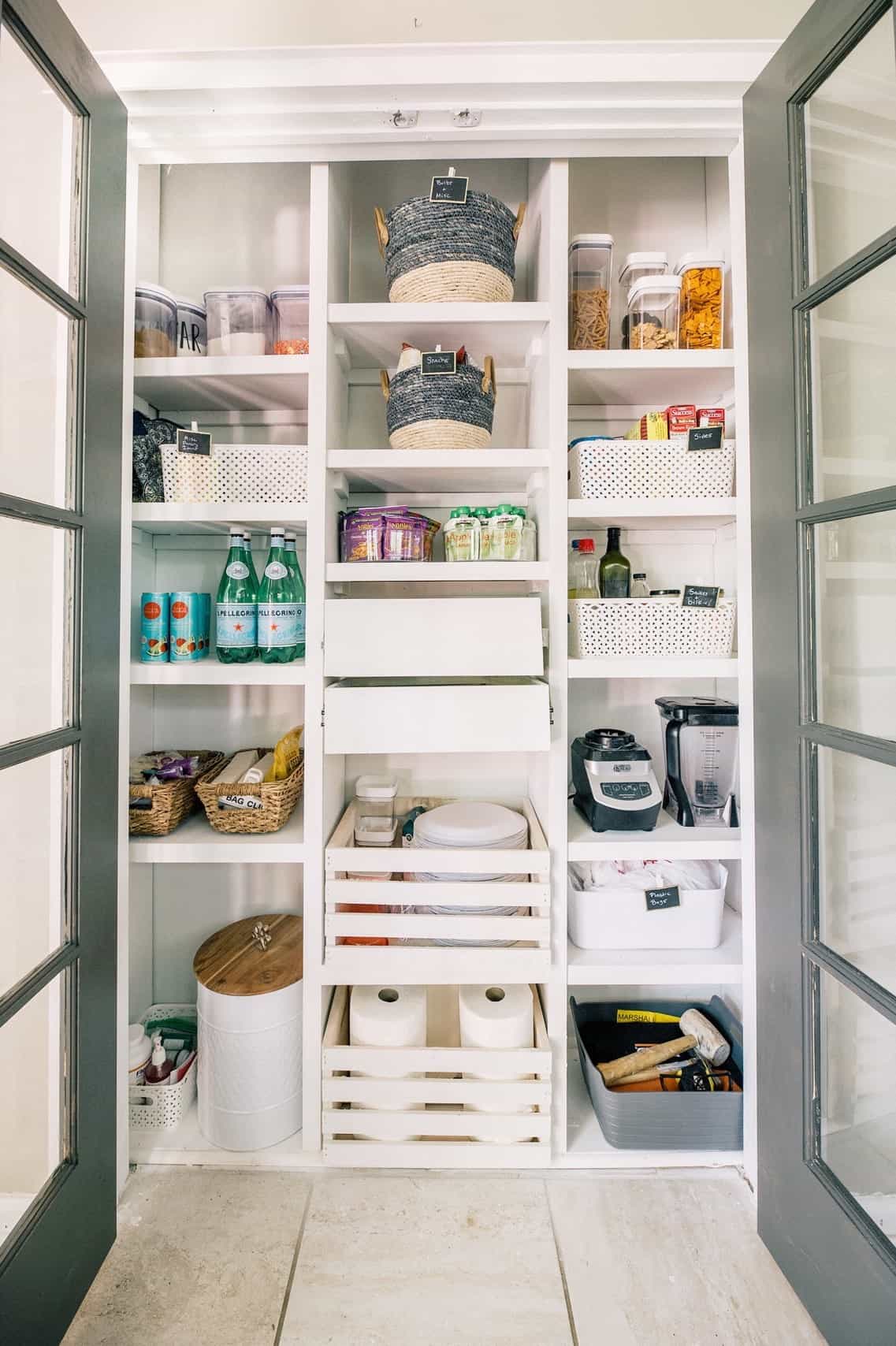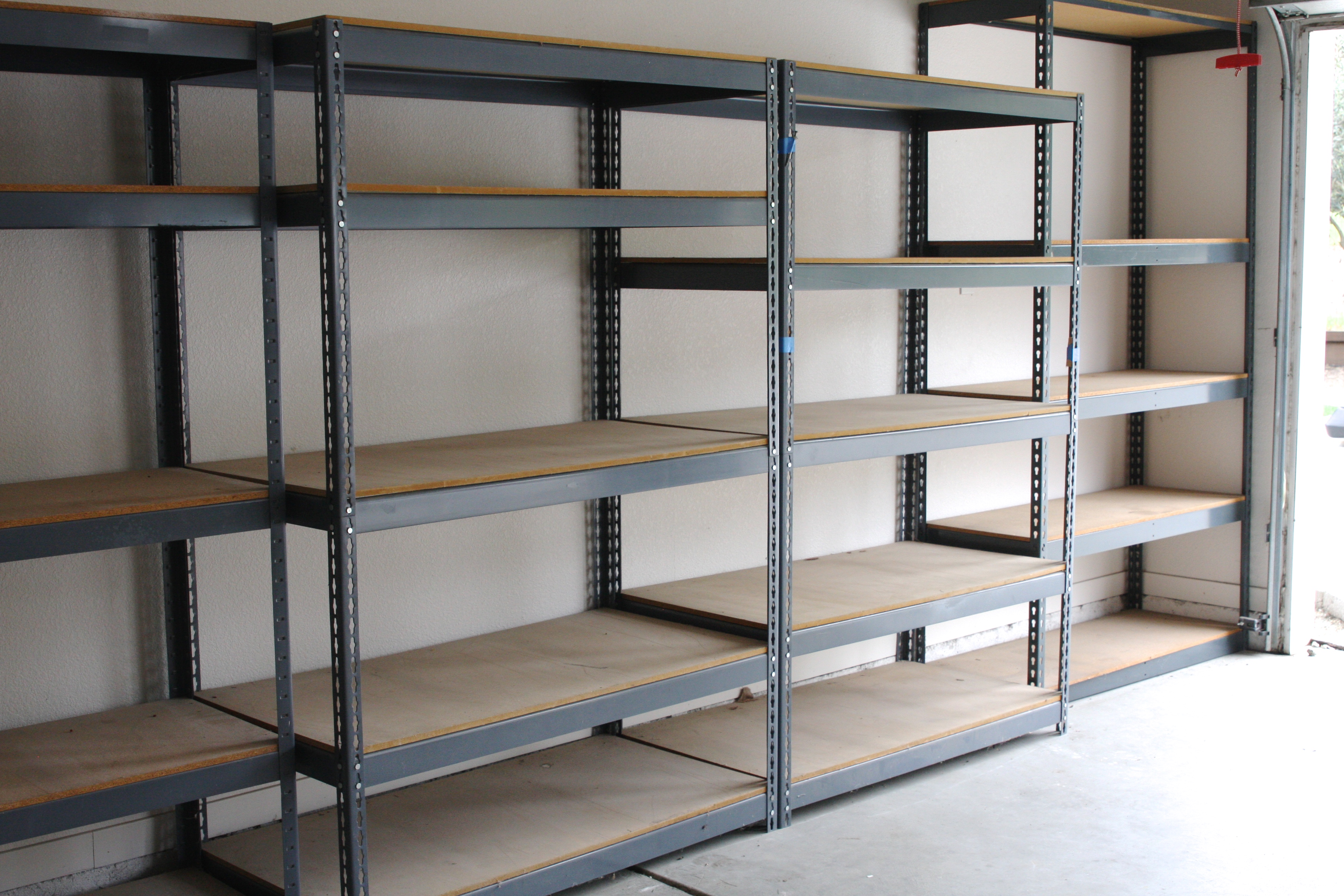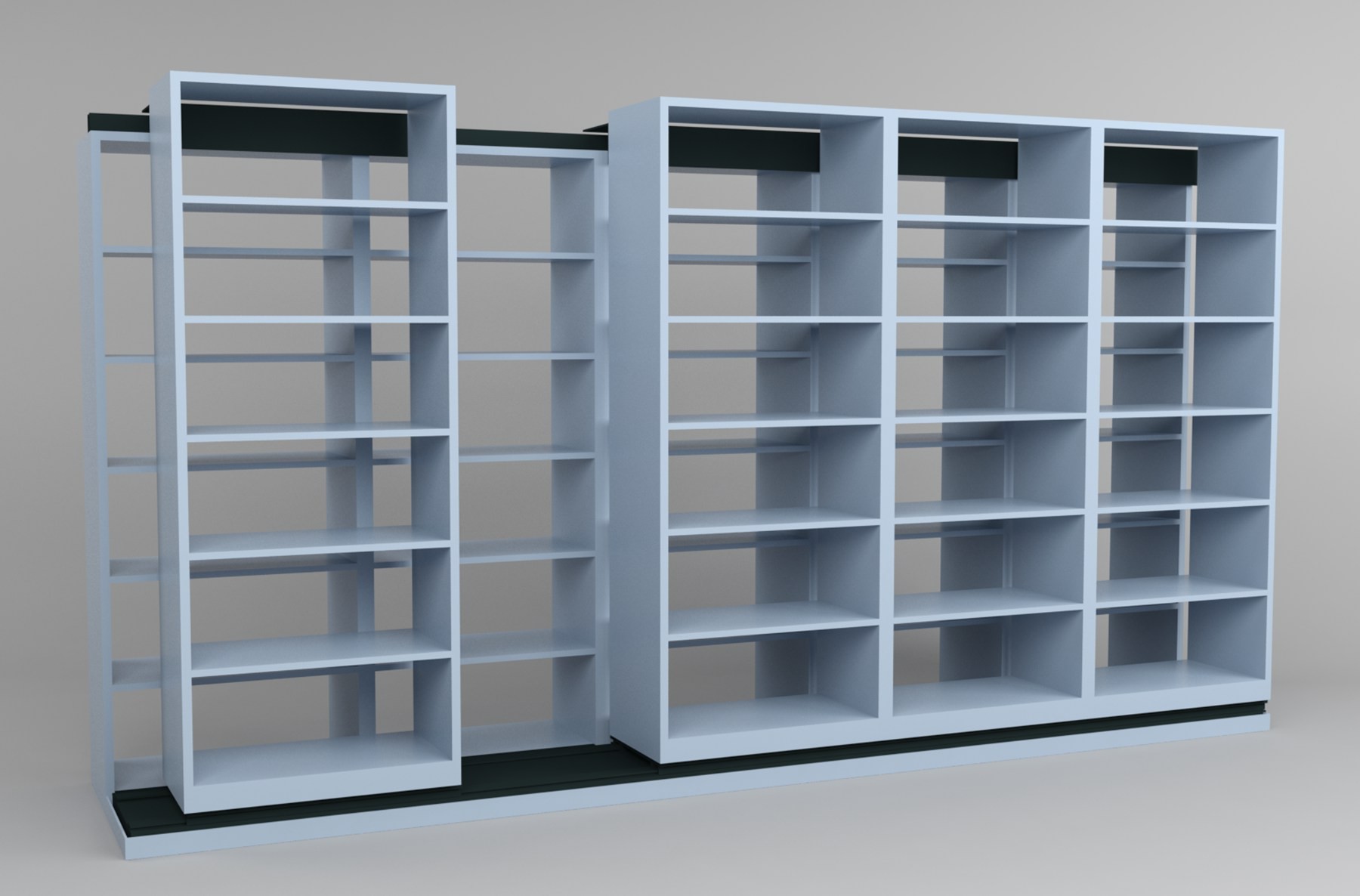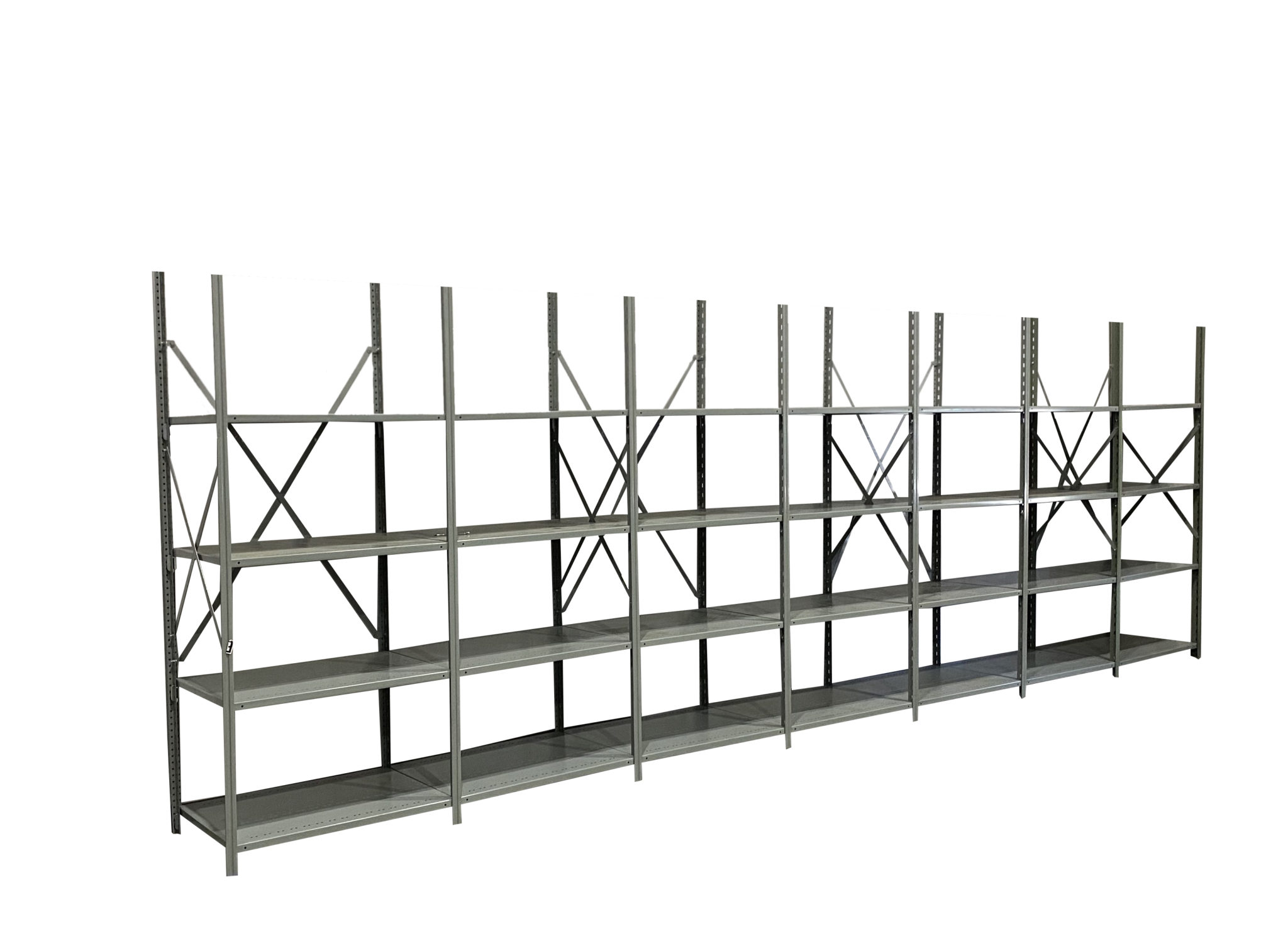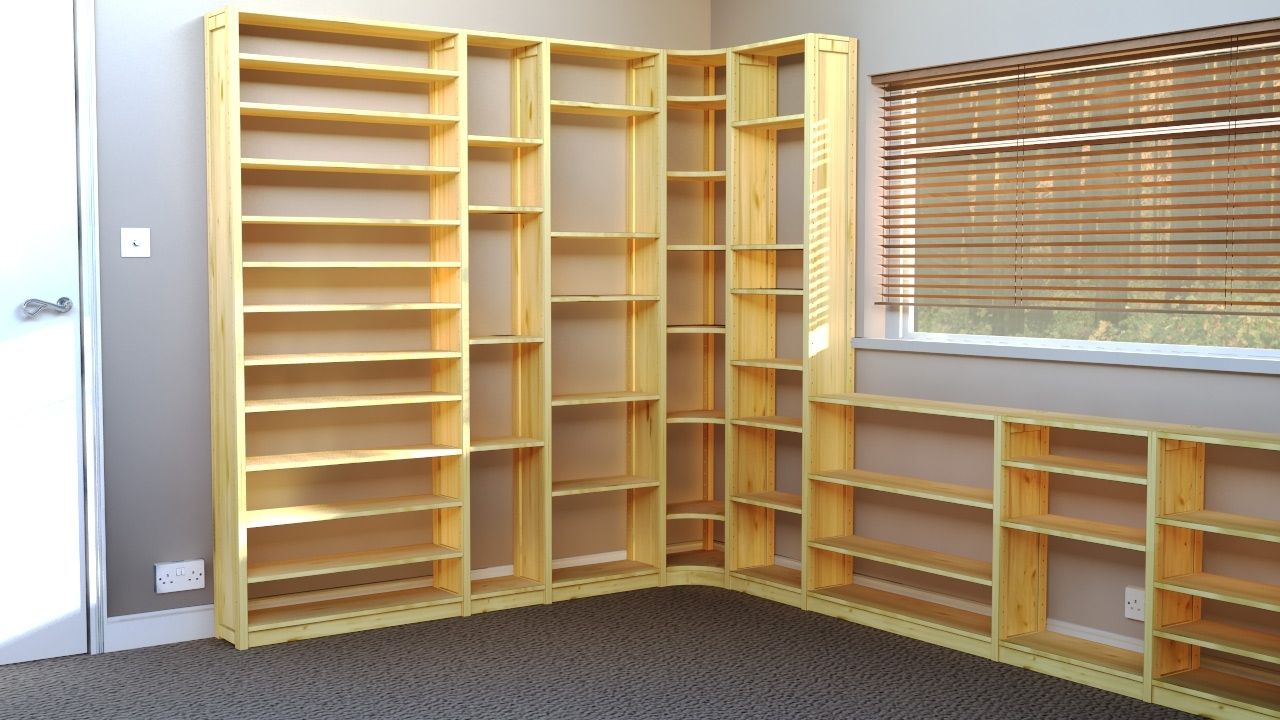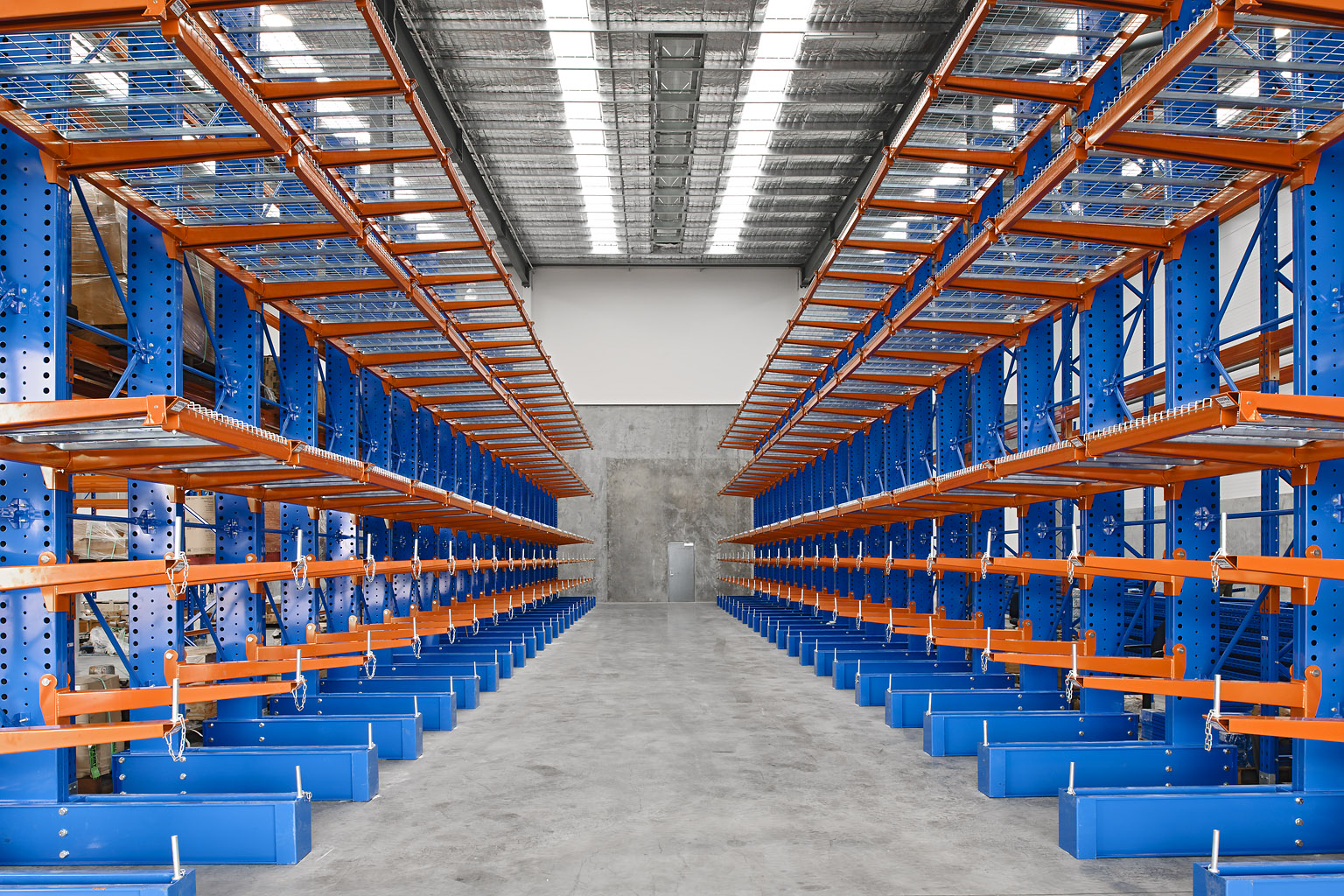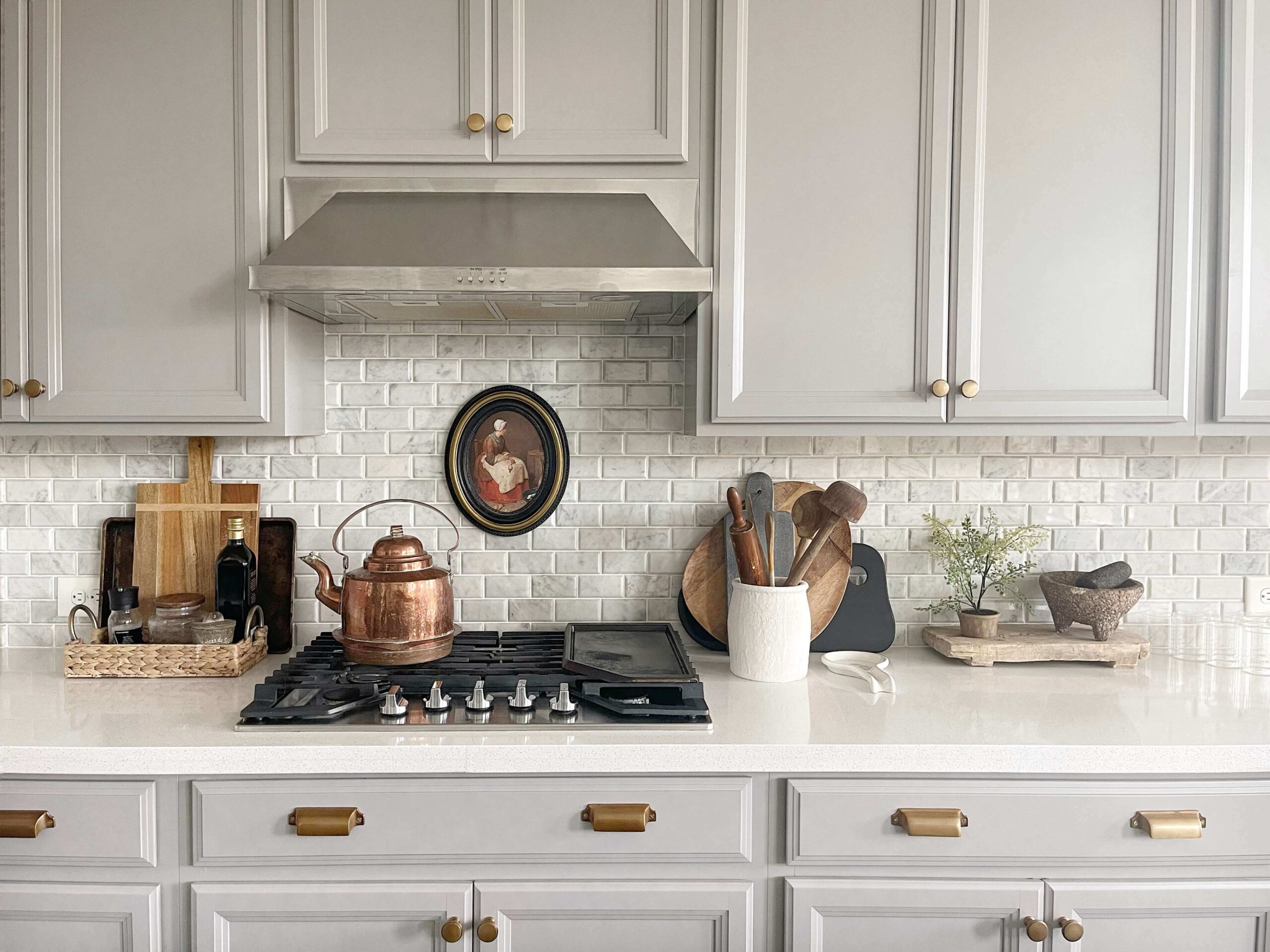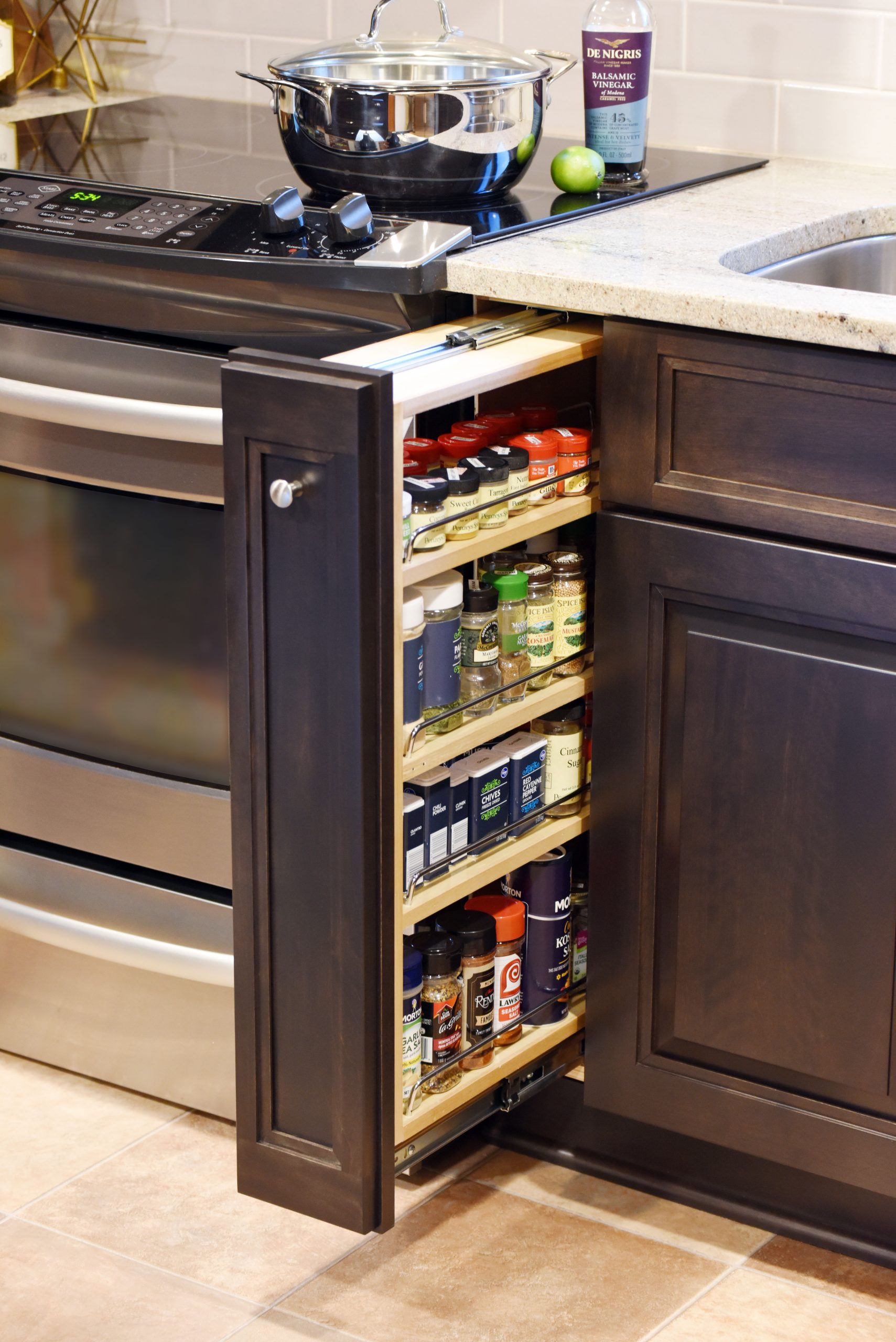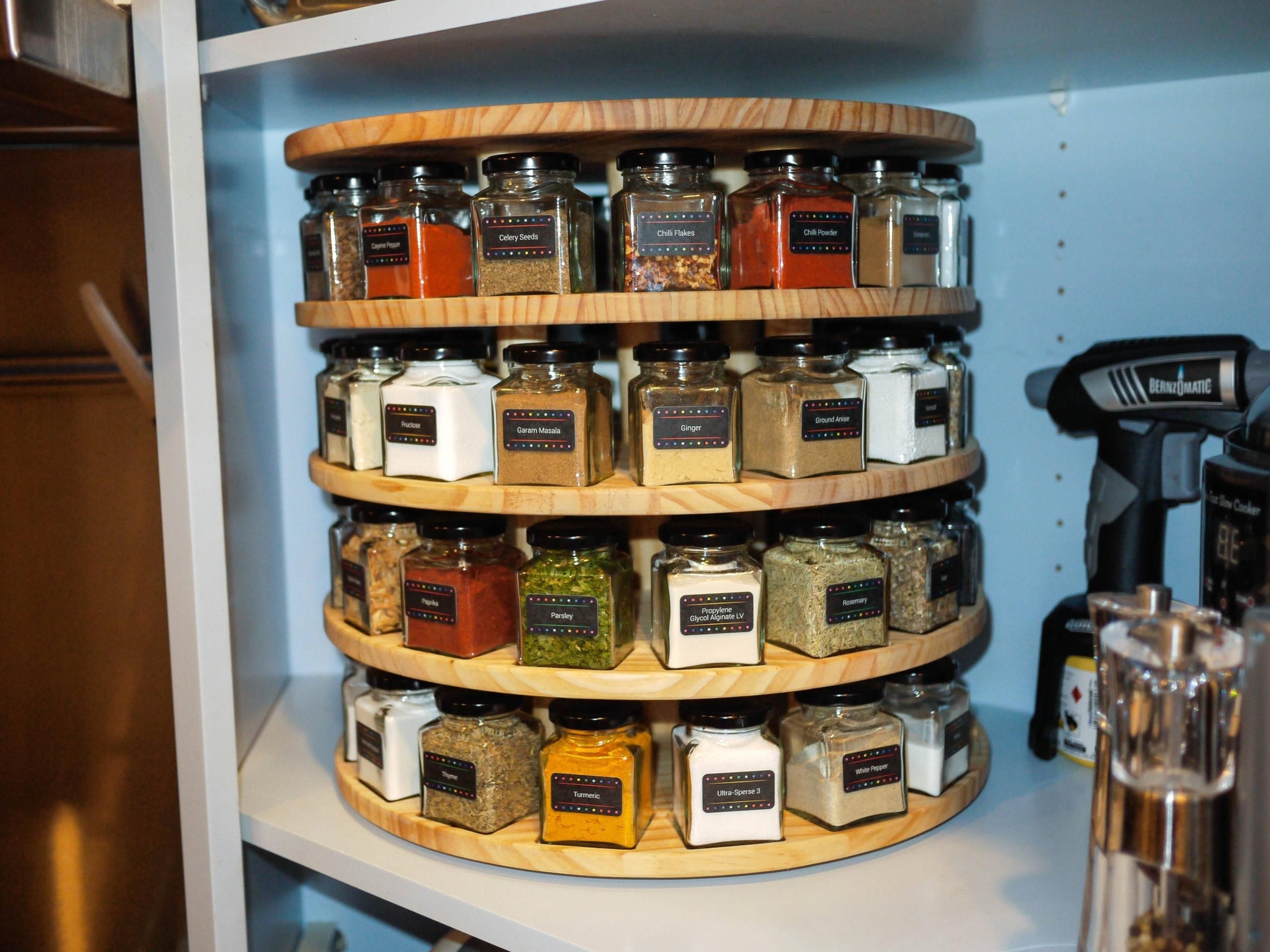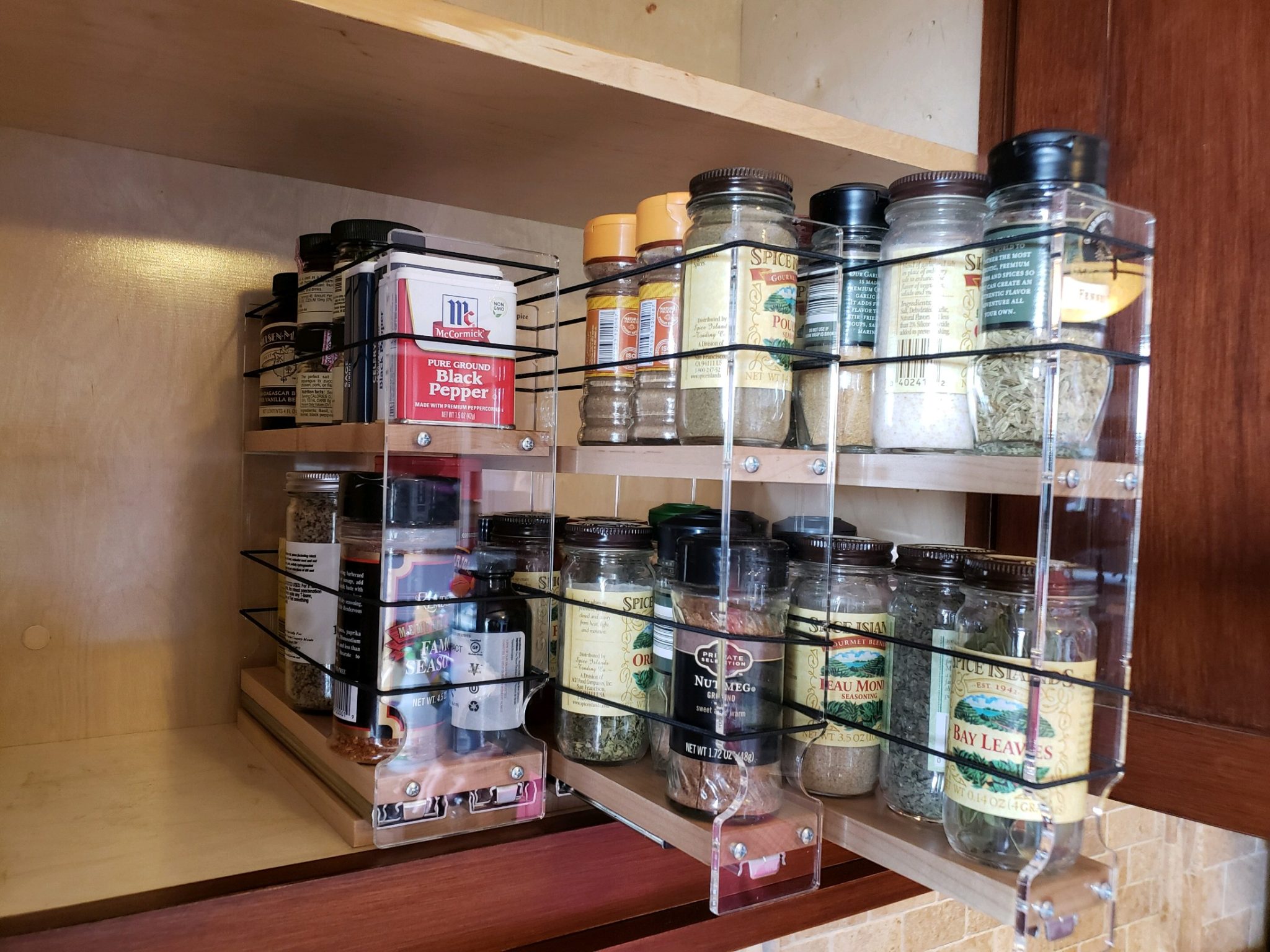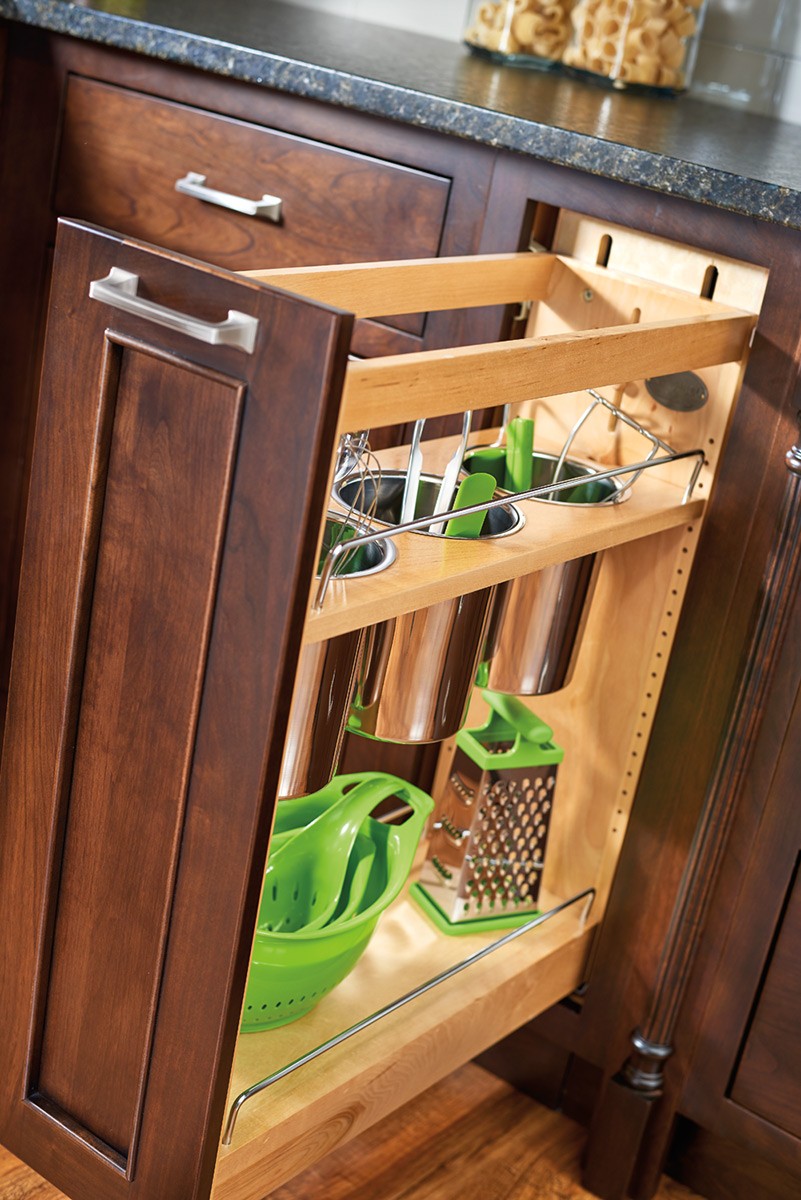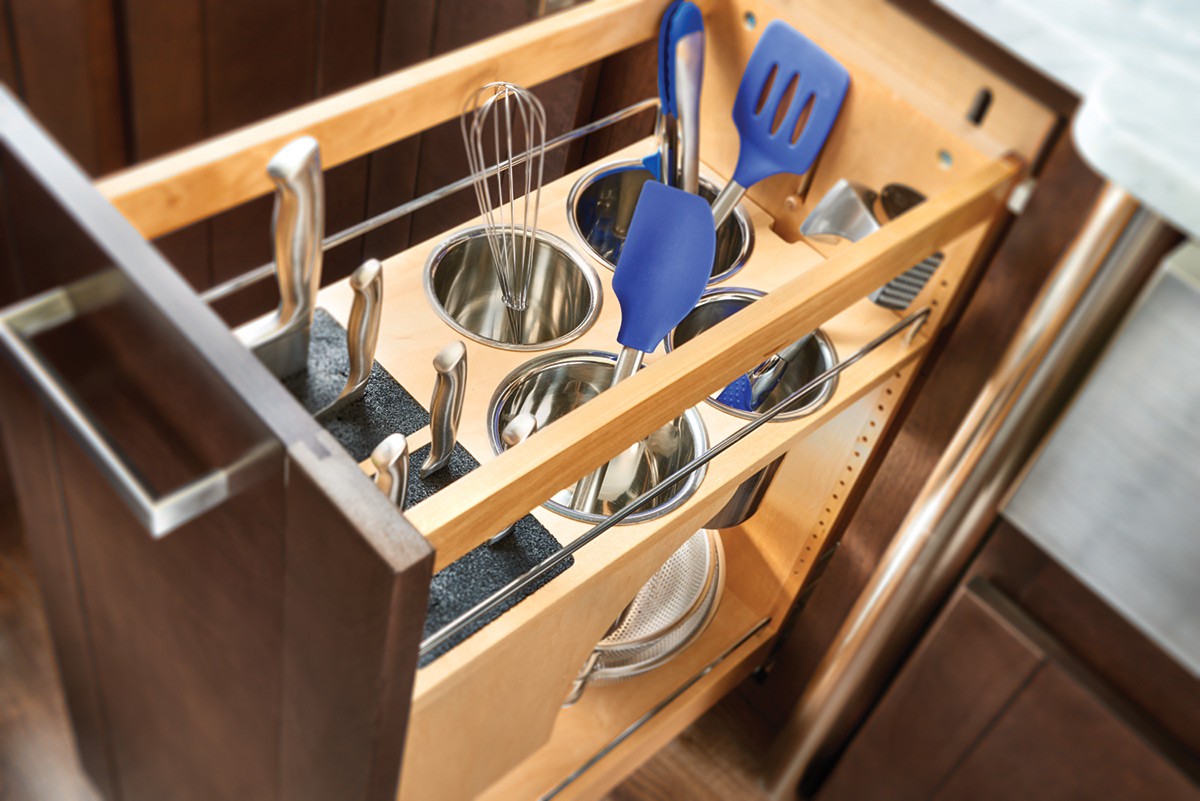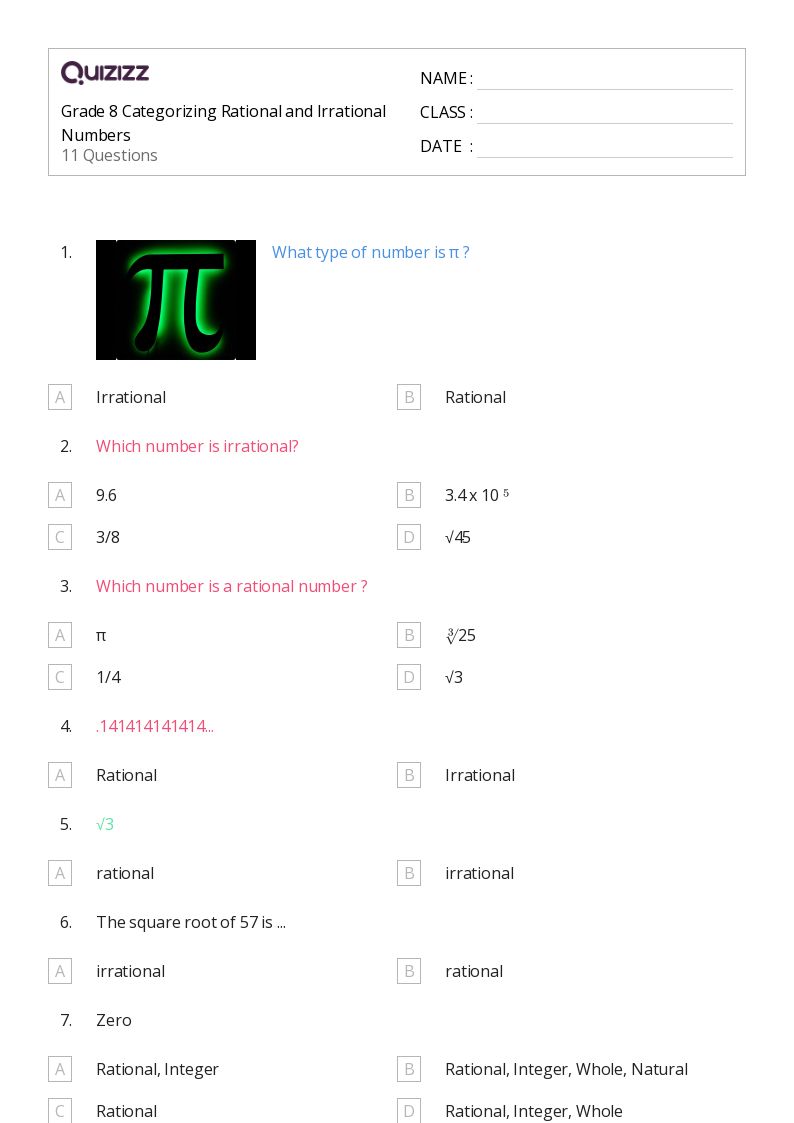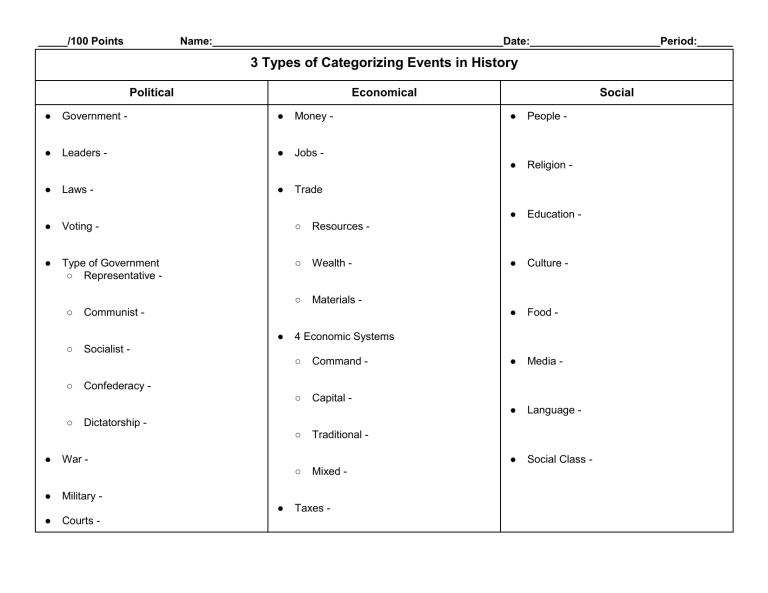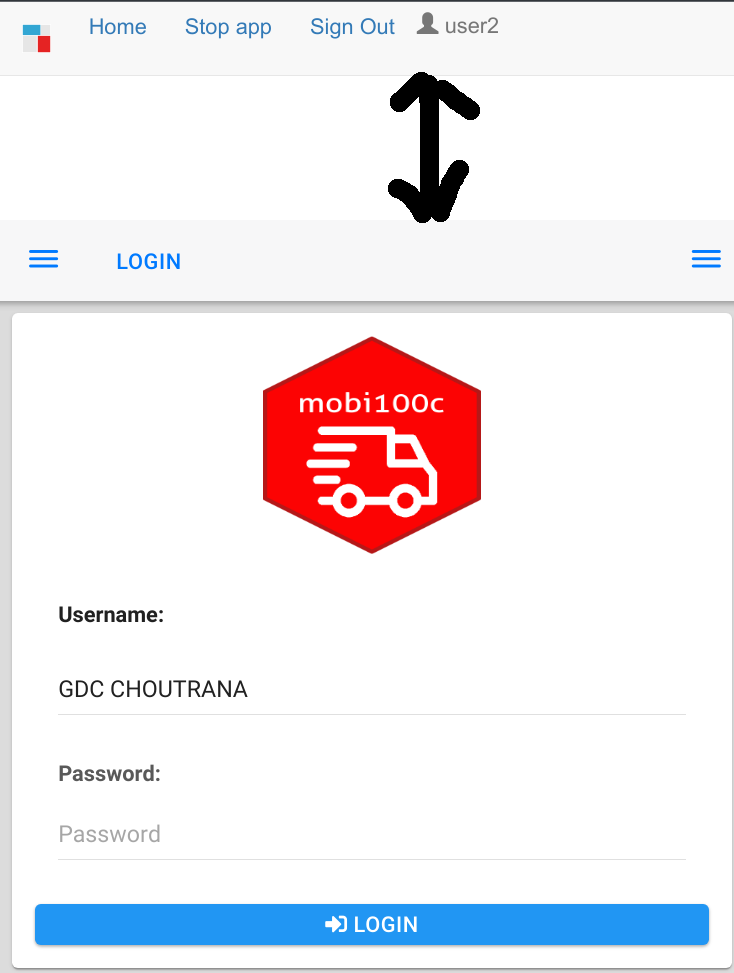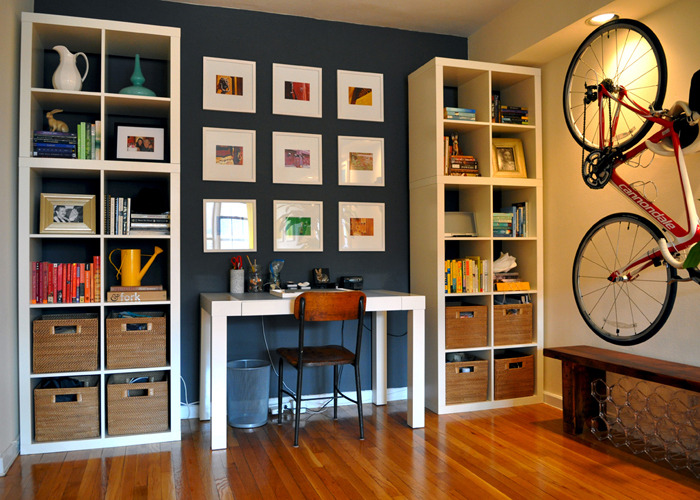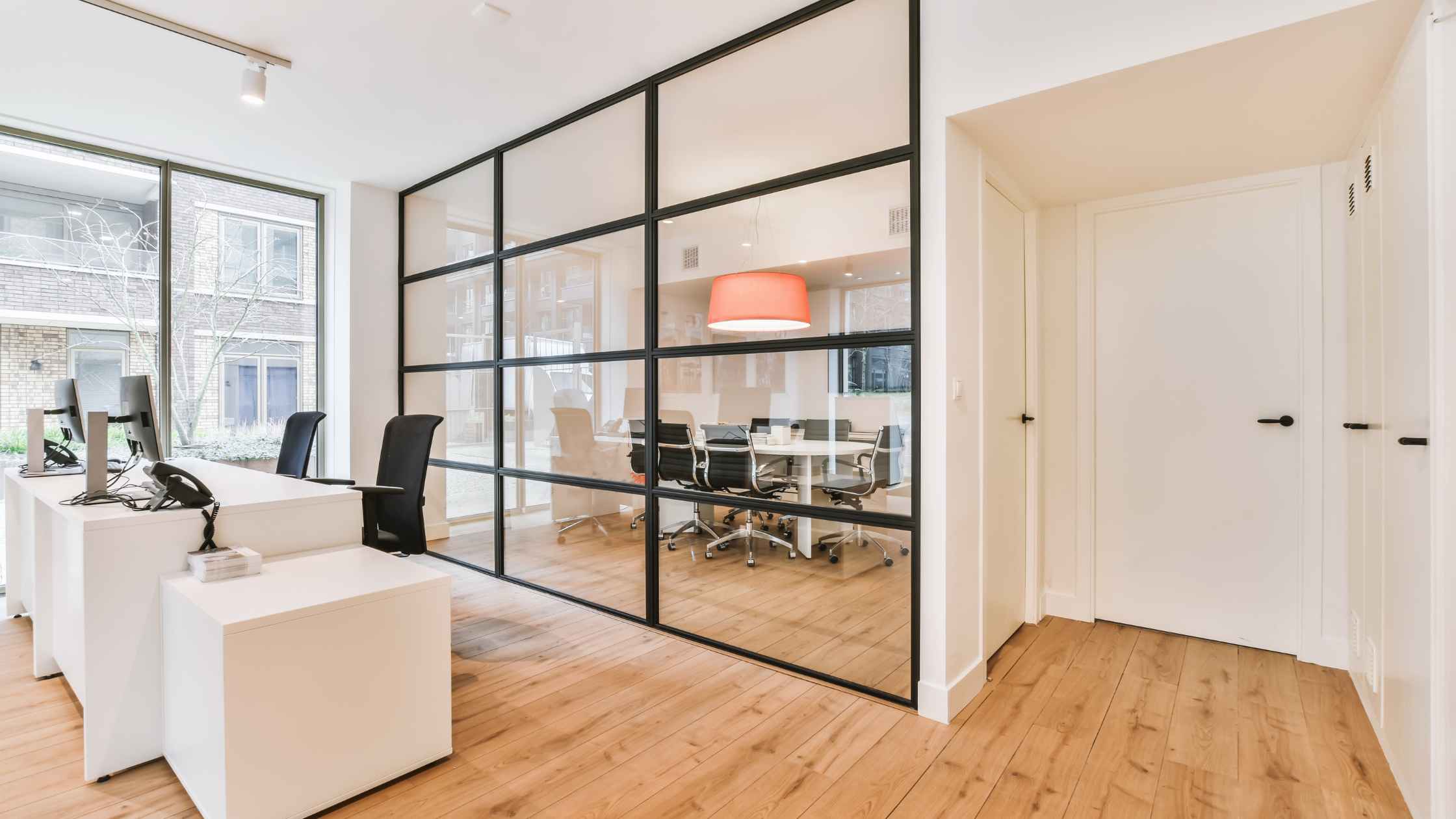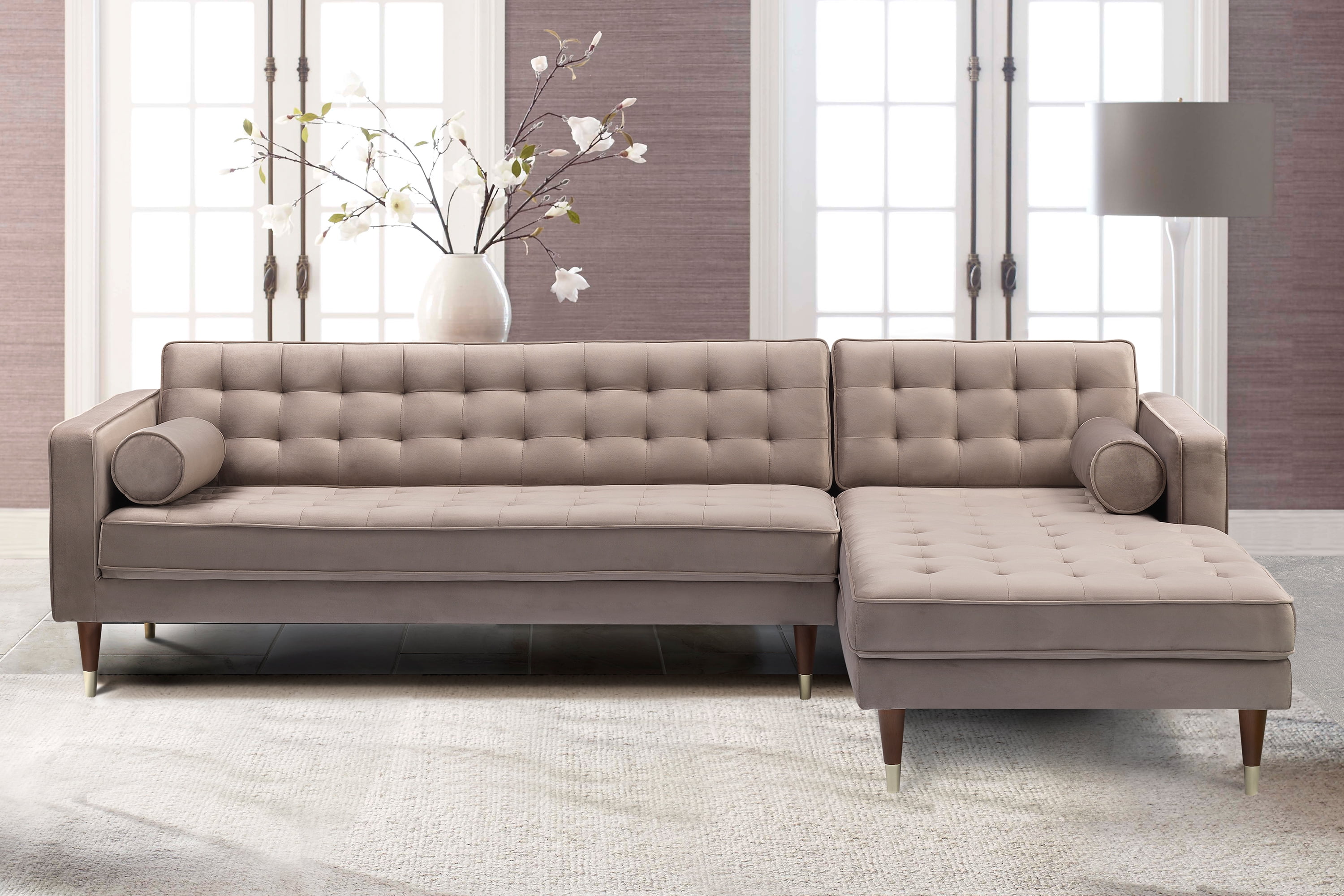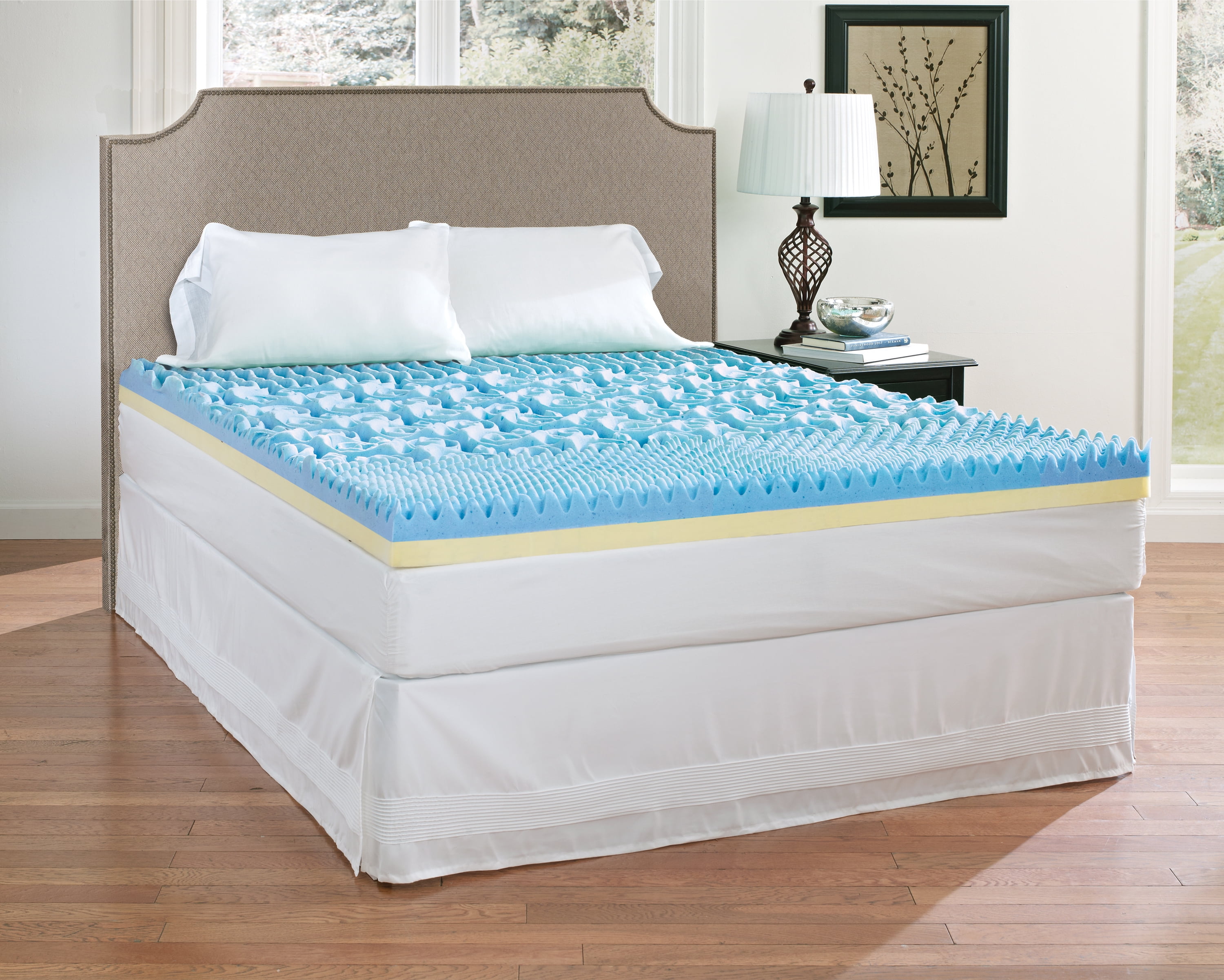When it comes to designing an organized kitchen, one of the most important factors to consider is the layout. This involves determining the placement of appliances, cabinets, and workspaces in a way that maximizes efficiency and convenience. A well-designed kitchen layout will not only make it easier to navigate and use the space, but it can also help improve the overall aesthetic of the room. Consider the functionality of your kitchen when deciding on a layout. For example, if you do a lot of cooking and need plenty of counter space, a U-shaped or L-shaped kitchen with a central island may be the best option. If you have a smaller space, a galley or one-wall kitchen may be more suitable. Don't be afraid to experiment with different layouts and get creative with your design. You can even use online kitchen layout tools to help you visualize and plan your ideal kitchen setup.1. Kitchen Layout Design
Cabinets are an essential element of any kitchen, providing ample storage space for dishes, cookware, and food items. However, without proper organization, cabinets can quickly become cluttered and difficult to navigate. One way to optimize your cabinet space is by using stackable shelves or organizing inserts to create more vertical storage. This will allow you to make use of the often-overlooked space above your dishes and other items. Utilizing drawer dividers can also help keep your cabinets neat and tidy. These can be used to separate utensils, cutlery, and other small items, making them easier to find and access.2. Cabinet Organization
Having a well-organized pantry is essential for any kitchen. It's where you store your non-perishable items, so it's important to make the most of the space you have. One way to optimize pantry storage is by using clear, airtight containers for items like flour, sugar, and pasta. This not only keeps your pantry looking tidy but also helps keep your food fresh for longer. Labeling these containers can also make it easier to find what you need quickly. Another option is to use over-the-door storage for things like spices, condiments, and snacks. This utilizes vertical space and keeps items within easy reach.3. Pantry Storage Solutions
Drawers are often an overlooked storage space in the kitchen, but they can be incredibly useful for keeping things organized. However, without proper organization, they can quickly become a jumbled mess. Investing in drawer dividers can help keep your drawers neat and tidy. These can be used to separate and organize items like cooking utensils, cutlery, and even food storage containers. This makes it easier to find what you need and prevents items from getting lost in the chaos.4. Drawer Dividers
Shelving is another important element of kitchen organization, providing extra storage space for items that don't fit in cabinets or drawers. When choosing shelves, opt for adjustable options that allow you to customize the space to fit your needs. Utilizing vertical space is key when it comes to shelving. Consider using stackable shelves or hanging baskets to make the most of the space you have. You can also use shelves to display decorative items or cookbooks, adding a personal touch to your kitchen.5. Shelving Systems
Countertops are often the first place to become cluttered in a busy kitchen. However, with the right organization, you can keep your counters clear and functional. Invest in a utensil holder to keep frequently used cooking tools within easy reach. You can also use countertop organizers for items like cutting boards, baking sheets, and trays to prevent them from taking up too much space. Consider storing items that you don't use every day, like small appliances, in cabinets or on shelves to keep your counters free from clutter.6. Countertop Organization
Spices are a staple in any kitchen, but they can quickly take over valuable cabinet and counter space if not properly organized. Using a spice rack is an excellent way to keep your spices in one place and easily accessible. There are many creative spice rack ideas out there, from wall-mounted racks to pull-out organizers. Choose one that fits your space and personal style, and keep your spices neatly organized and within reach.7. Spice Rack Ideas
Utensils are another item that can easily clutter up your kitchen if not properly organized. Consider using a utensil holder or a drawer divider to keep them neat and easily accessible. Another option is to hang utensils on a wall-mounted organizer or a magnetic strip. This not only keeps them organized but also adds a decorative touch to your kitchen.8. Utensil Storage
Labeling and categorizing are key elements of kitchen organization. Not only does this help you find things quickly, but it also prevents items from getting lost or misplaced. Label your containers, drawers, and shelves to ensure everything has a designated spot. Categorize your items, such as separating cooking utensils from cutlery, to make it easier to find what you need.9. Labeling and Categorizing
We've mentioned utilizing vertical space throughout this article, but it's worth emphasizing again. When it comes to maximizing storage in a small kitchen, vertical space is your best friend. Consider using wall-mounted shelves, hooks, or hanging baskets to make use of the space above your cabinets and countertops. You can also use stackable shelves or organizers to make the most of your pantry and cabinets. With these tips and ideas for designing an organized kitchen, you can create a functional and aesthetically pleasing space that makes cooking and meal prep a breeze. Remember to get creative and use every inch of your kitchen to optimize storage and keep things neat and tidy.10. Utilizing Vertical Space
Why Having an Organized Kitchen is Essential for a Well-Designed Home
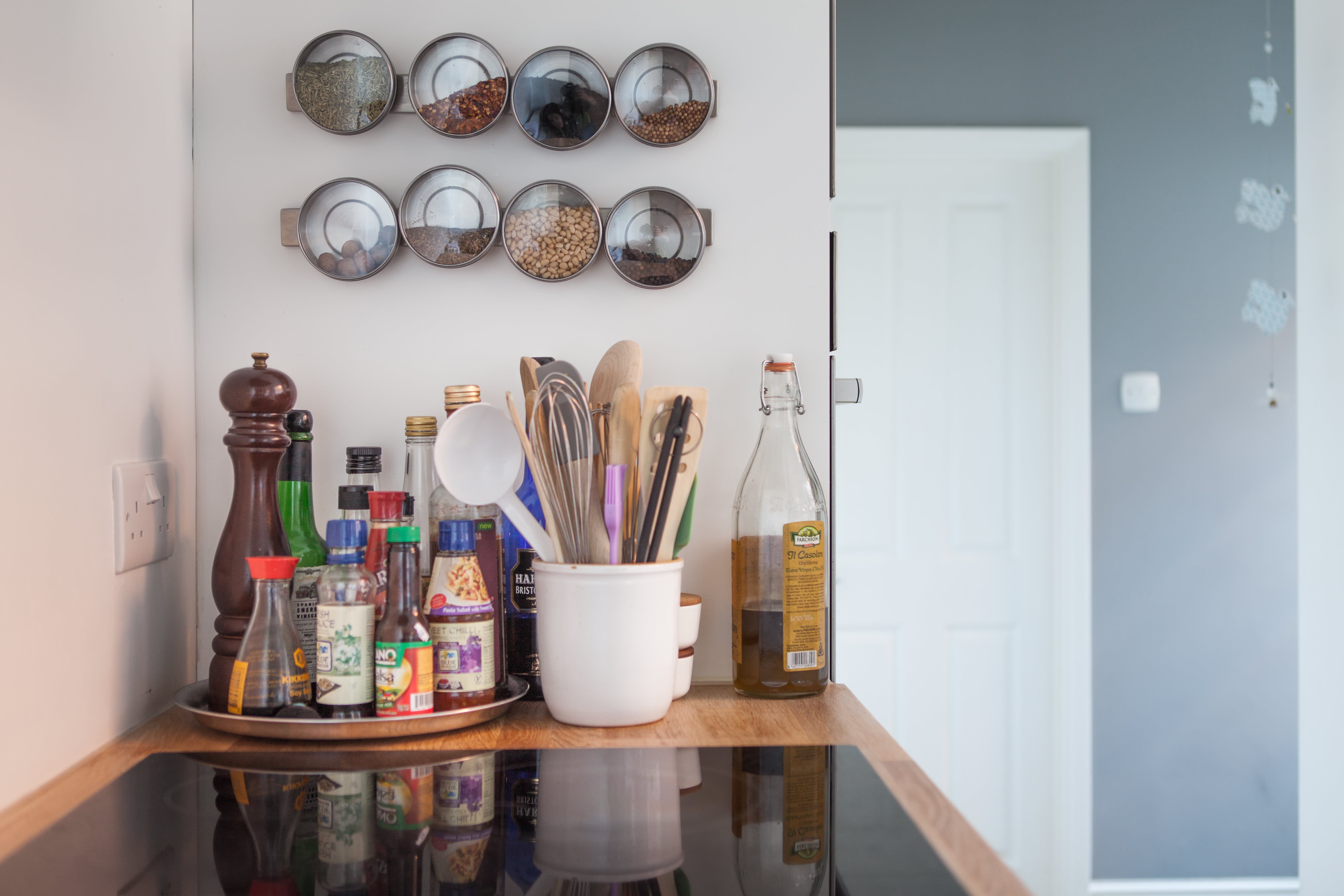 Having an organized kitchen is crucial for maintaining a well-designed home. Not only does it make cooking and meal preparation more efficient, but it also creates a welcoming and functional space for the entire family to enjoy. With a few simple design strategies and organizational techniques, you can transform your cluttered kitchen into a well-organized and visually appealing space.
Having an organized kitchen is crucial for maintaining a well-designed home. Not only does it make cooking and meal preparation more efficient, but it also creates a welcoming and functional space for the entire family to enjoy. With a few simple design strategies and organizational techniques, you can transform your cluttered kitchen into a well-organized and visually appealing space.
Maximize Storage Space
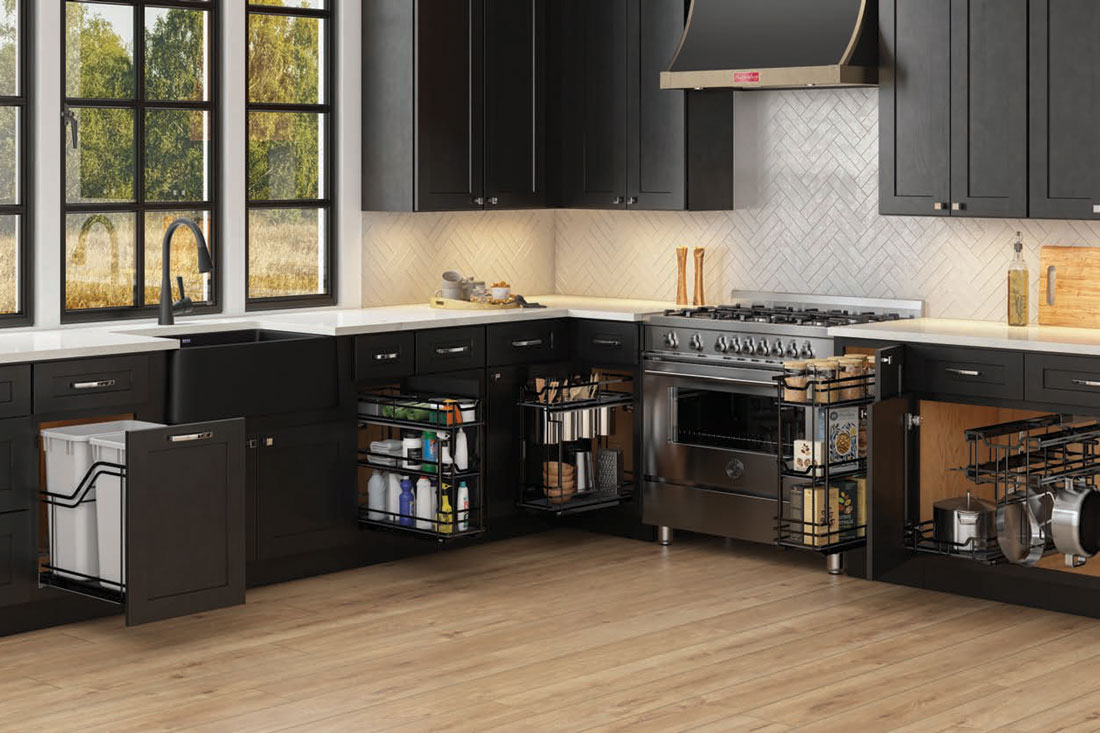 One of the keys to an organized kitchen is maximizing storage space. This can be achieved by utilizing all available space, including cabinets, shelves, and drawers. Consider installing pull-out shelves and drawer organizers to make the most of your storage space. Utilizing vertical space is also important, so make use of wall-mounted shelves or hanging racks to store pots, pans, and utensils.
One of the keys to an organized kitchen is maximizing storage space. This can be achieved by utilizing all available space, including cabinets, shelves, and drawers. Consider installing pull-out shelves and drawer organizers to make the most of your storage space. Utilizing vertical space is also important, so make use of wall-mounted shelves or hanging racks to store pots, pans, and utensils.
Group Similar Items Together
 Grouping similar items together not only makes it easier to find what you need, but it also creates a cohesive and visually appealing look in your kitchen. Keep all cooking utensils in one drawer, store baking supplies in a designated cabinet, and group all spices together in a spice rack. This will not only save you time when cooking, but it will also make your kitchen look more organized and put together.
Grouping similar items together not only makes it easier to find what you need, but it also creates a cohesive and visually appealing look in your kitchen. Keep all cooking utensils in one drawer, store baking supplies in a designated cabinet, and group all spices together in a spice rack. This will not only save you time when cooking, but it will also make your kitchen look more organized and put together.
Declutter Regularly
 One of the biggest challenges in maintaining an organized kitchen is dealing with clutter. It's important to regularly declutter your kitchen and get rid of any items that are no longer needed. This includes expired food, duplicate items, and kitchen gadgets that are rarely used. Not only will decluttering make your kitchen look more organized, but it will also free up valuable storage space.
One of the biggest challenges in maintaining an organized kitchen is dealing with clutter. It's important to regularly declutter your kitchen and get rid of any items that are no longer needed. This includes expired food, duplicate items, and kitchen gadgets that are rarely used. Not only will decluttering make your kitchen look more organized, but it will also free up valuable storage space.
Opt for a Neutral Color Palette
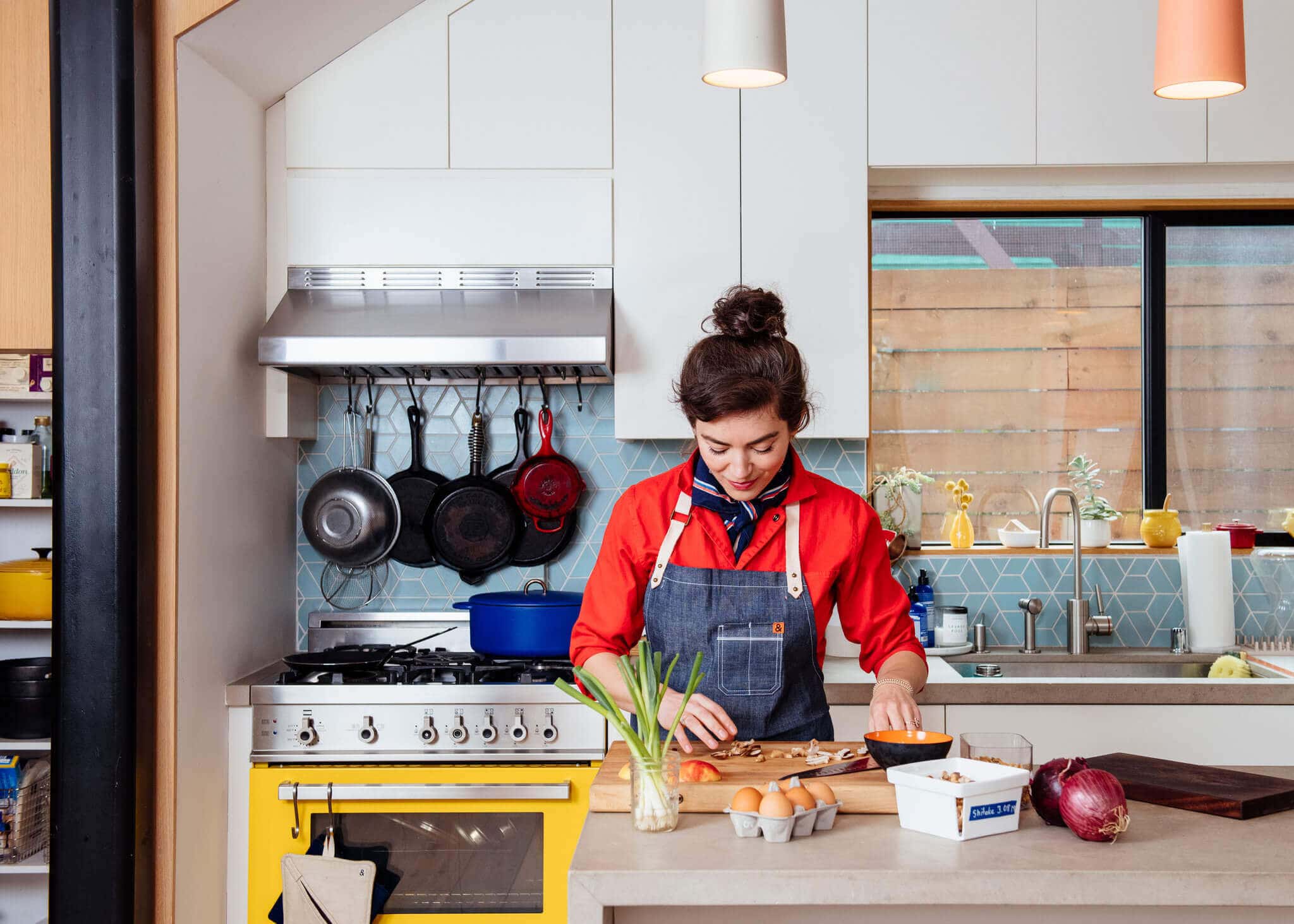 When it comes to kitchen design, a neutral color palette is the way to go. Not only does it create a clean and timeless look, but it also makes your kitchen feel more spacious and organized. Opt for light colors such as white, beige, or gray for your cabinets, countertops, and walls. You can always add pops of color with accessories and decor.
When it comes to kitchen design, a neutral color palette is the way to go. Not only does it create a clean and timeless look, but it also makes your kitchen feel more spacious and organized. Opt for light colors such as white, beige, or gray for your cabinets, countertops, and walls. You can always add pops of color with accessories and decor.
Invest in Quality Storage Solutions
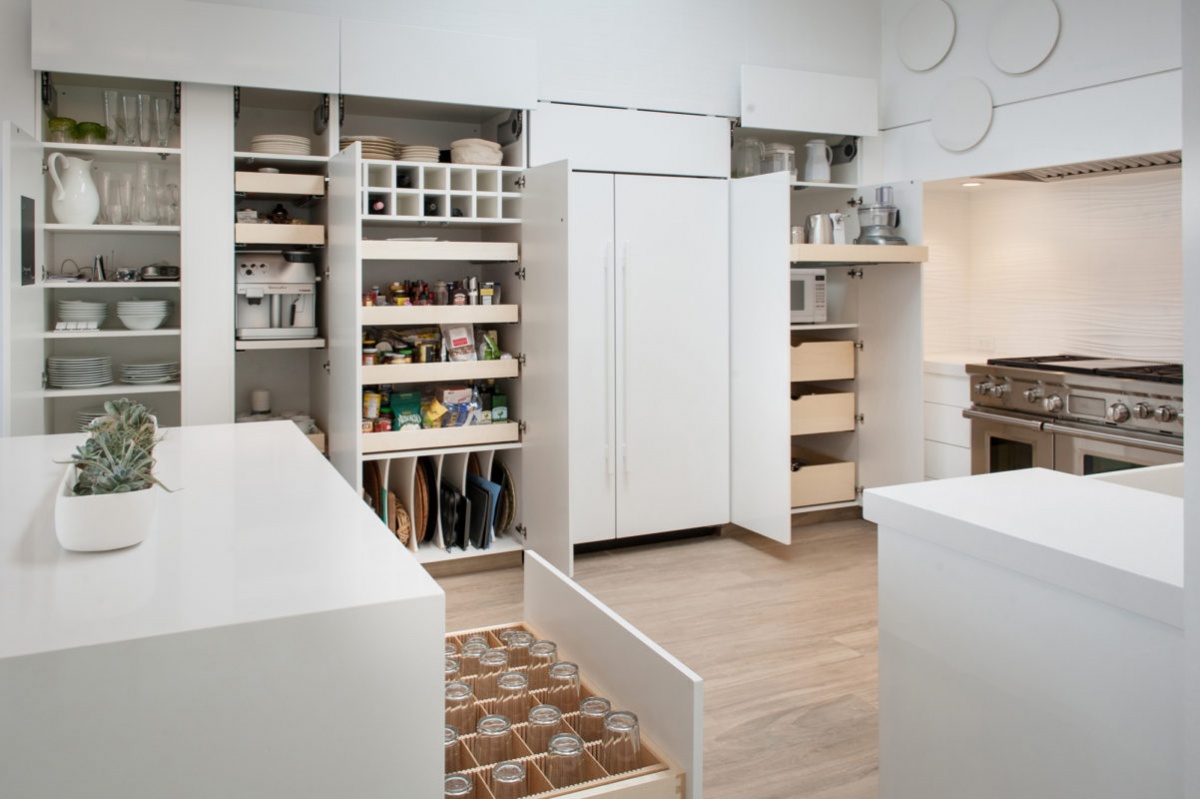 Investing in quality storage solutions can make a world of difference in keeping your kitchen organized. This could include investing in sturdy and durable containers for storing dry goods, or purchasing stackable containers to make the most of your pantry space. Don't be afraid to splurge on quality storage solutions as they will save you time and frustration in the long run.
In conclusion, having an organized kitchen is essential for a well-designed home. By maximizing storage space, grouping similar items together, decluttering regularly, opting for a neutral color palette, and investing in quality storage solutions, you can create a functional and visually appealing kitchen that will be the heart of your home.
Investing in quality storage solutions can make a world of difference in keeping your kitchen organized. This could include investing in sturdy and durable containers for storing dry goods, or purchasing stackable containers to make the most of your pantry space. Don't be afraid to splurge on quality storage solutions as they will save you time and frustration in the long run.
In conclusion, having an organized kitchen is essential for a well-designed home. By maximizing storage space, grouping similar items together, decluttering regularly, opting for a neutral color palette, and investing in quality storage solutions, you can create a functional and visually appealing kitchen that will be the heart of your home.

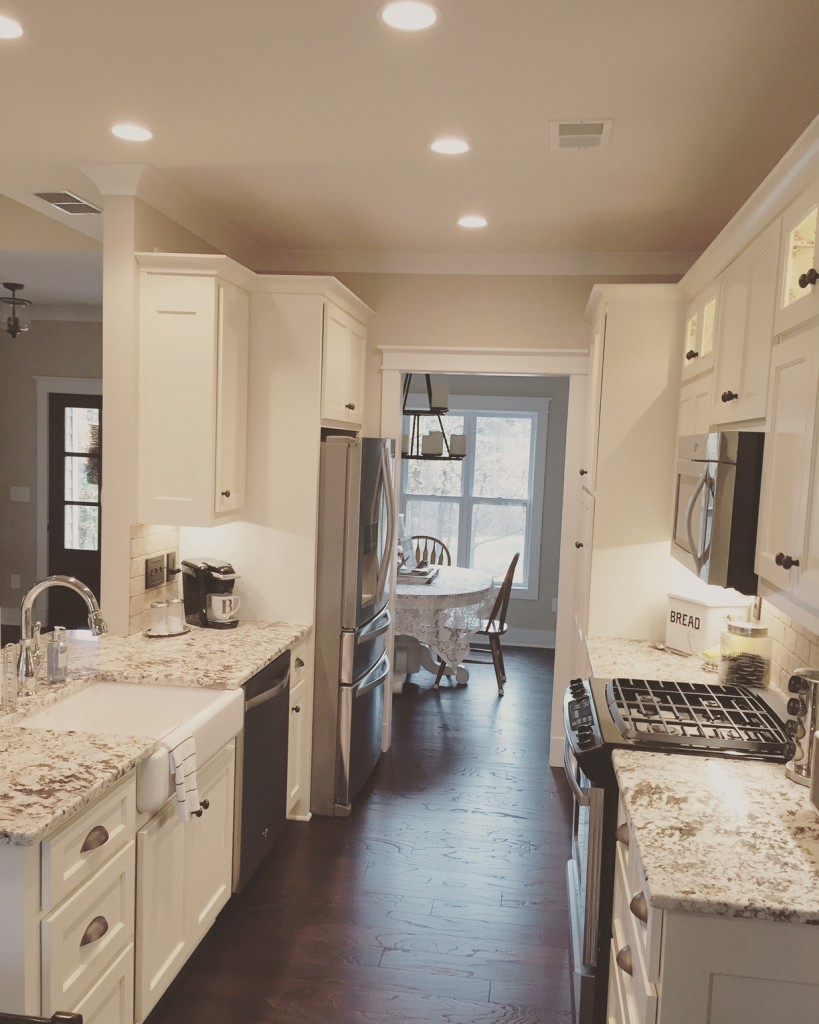


/One-Wall-Kitchen-Layout-126159482-58a47cae3df78c4758772bbc.jpg)
